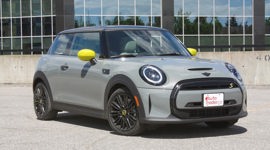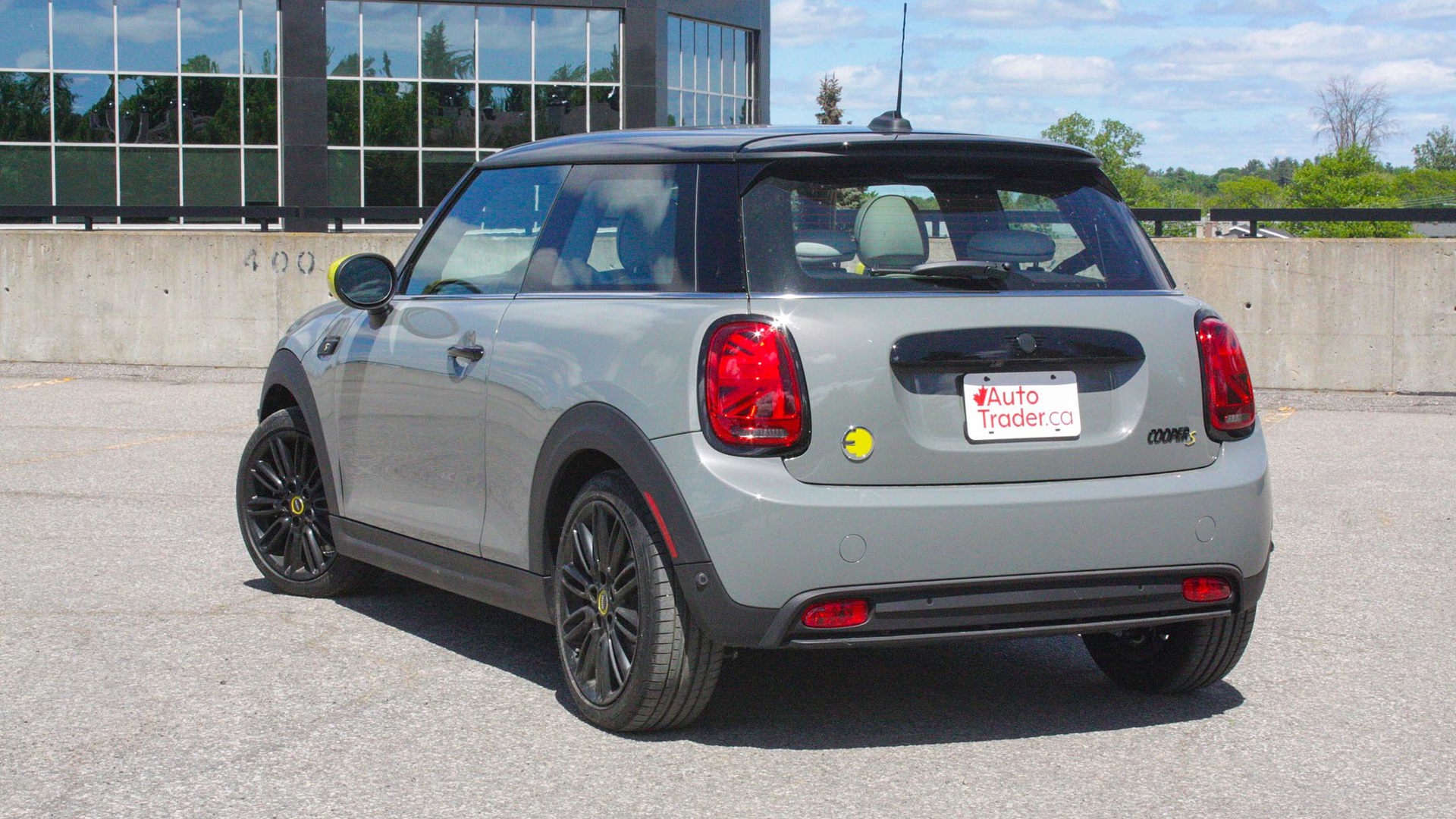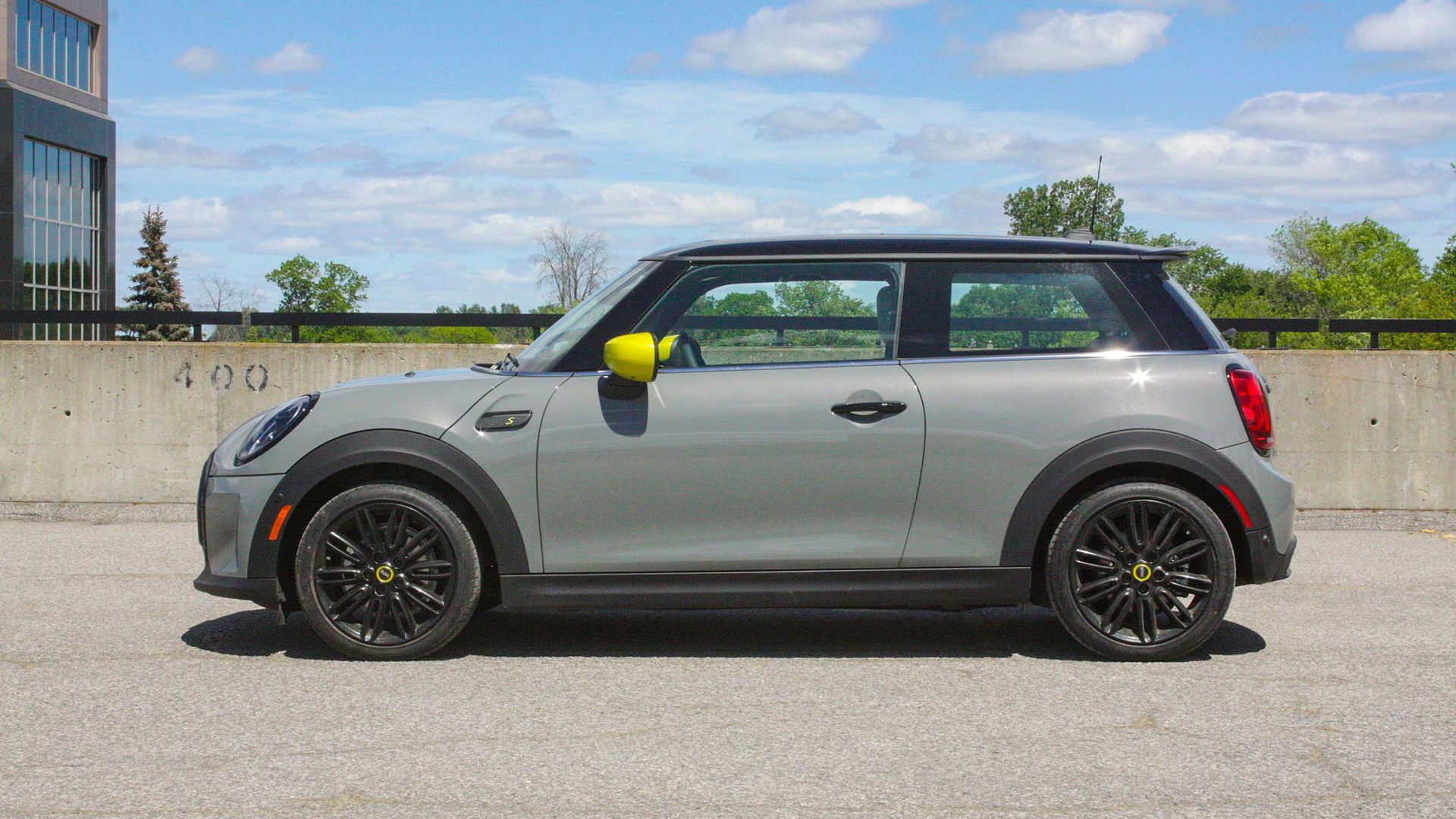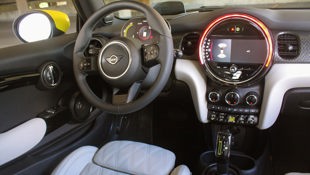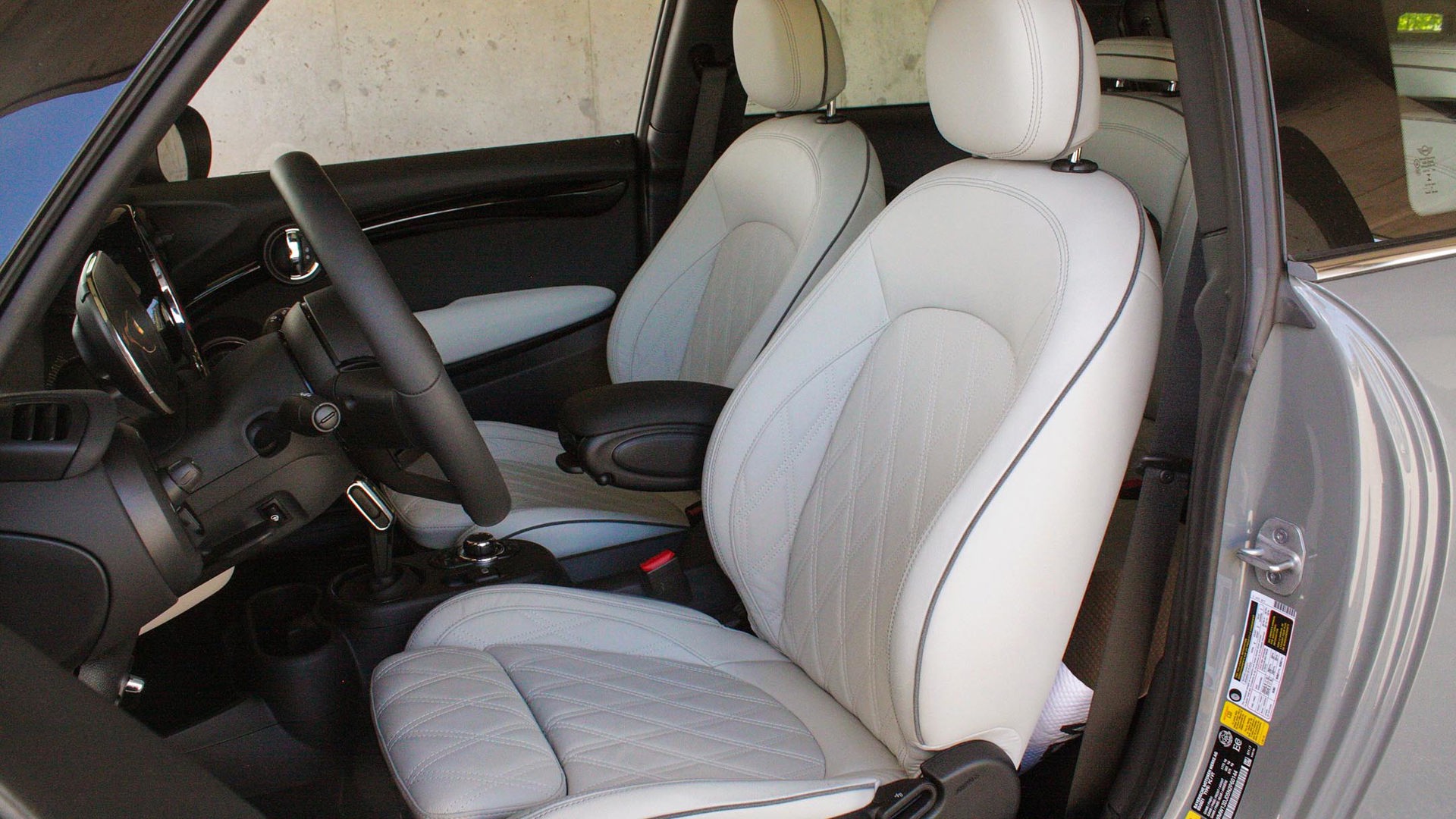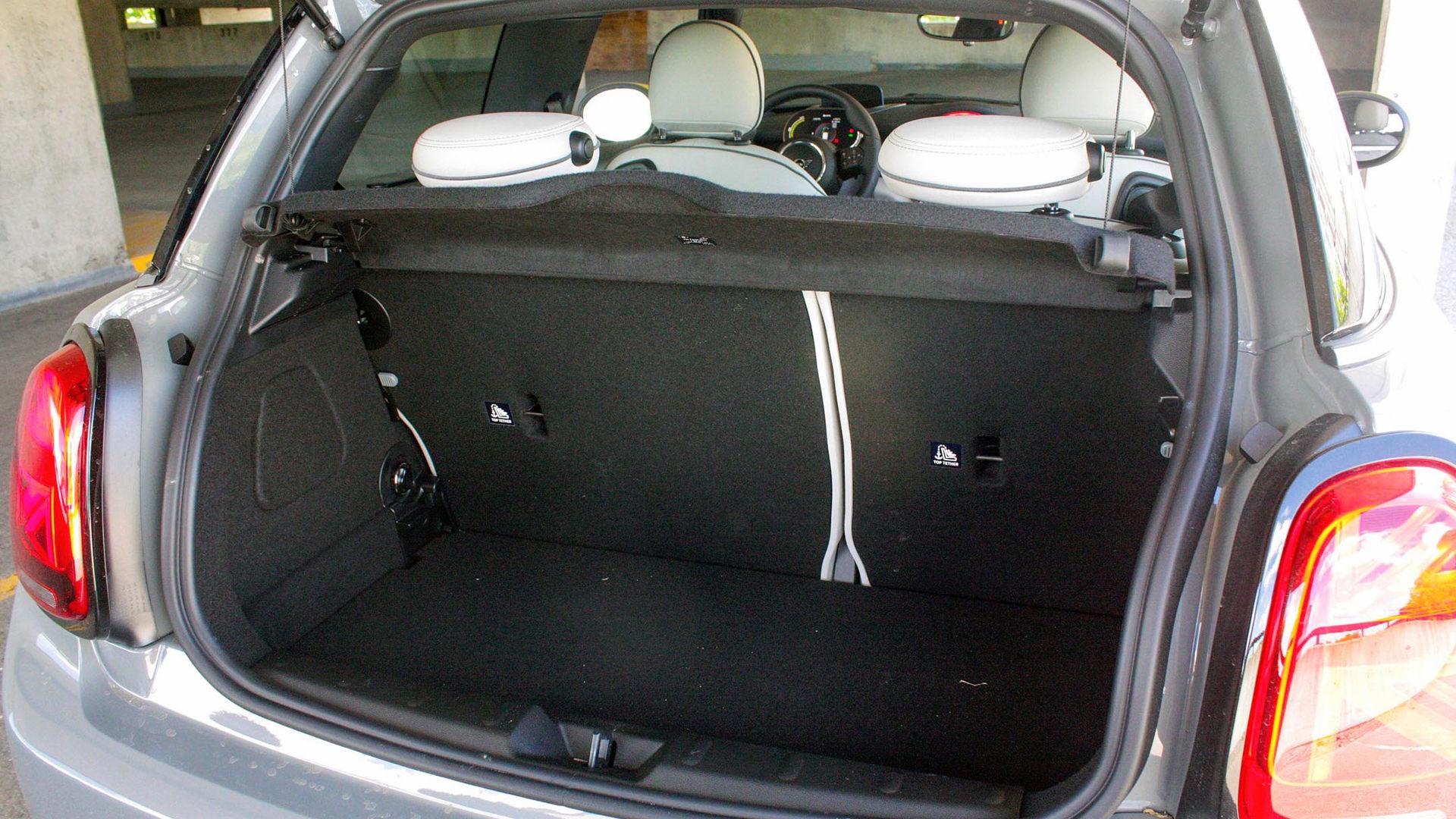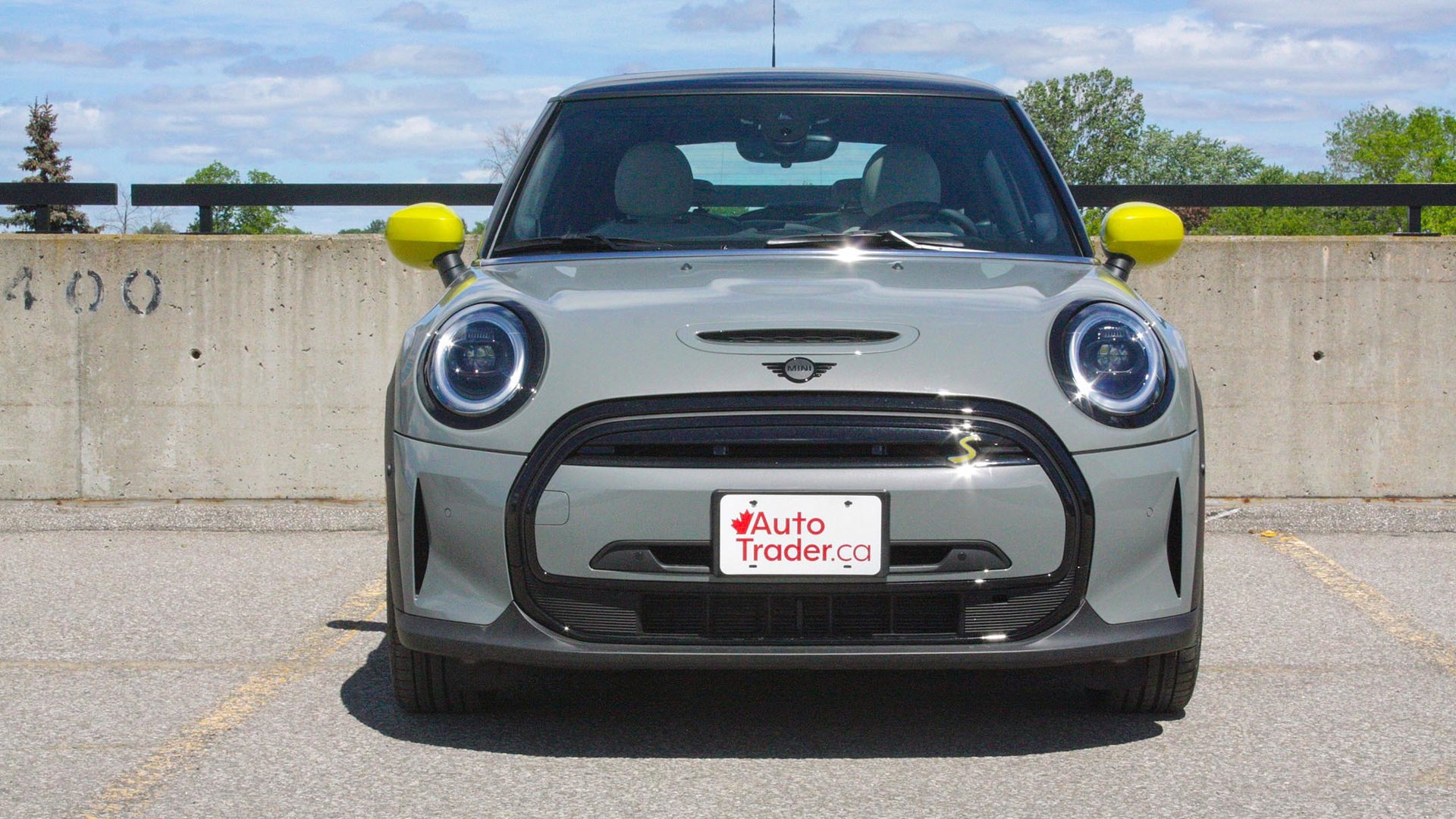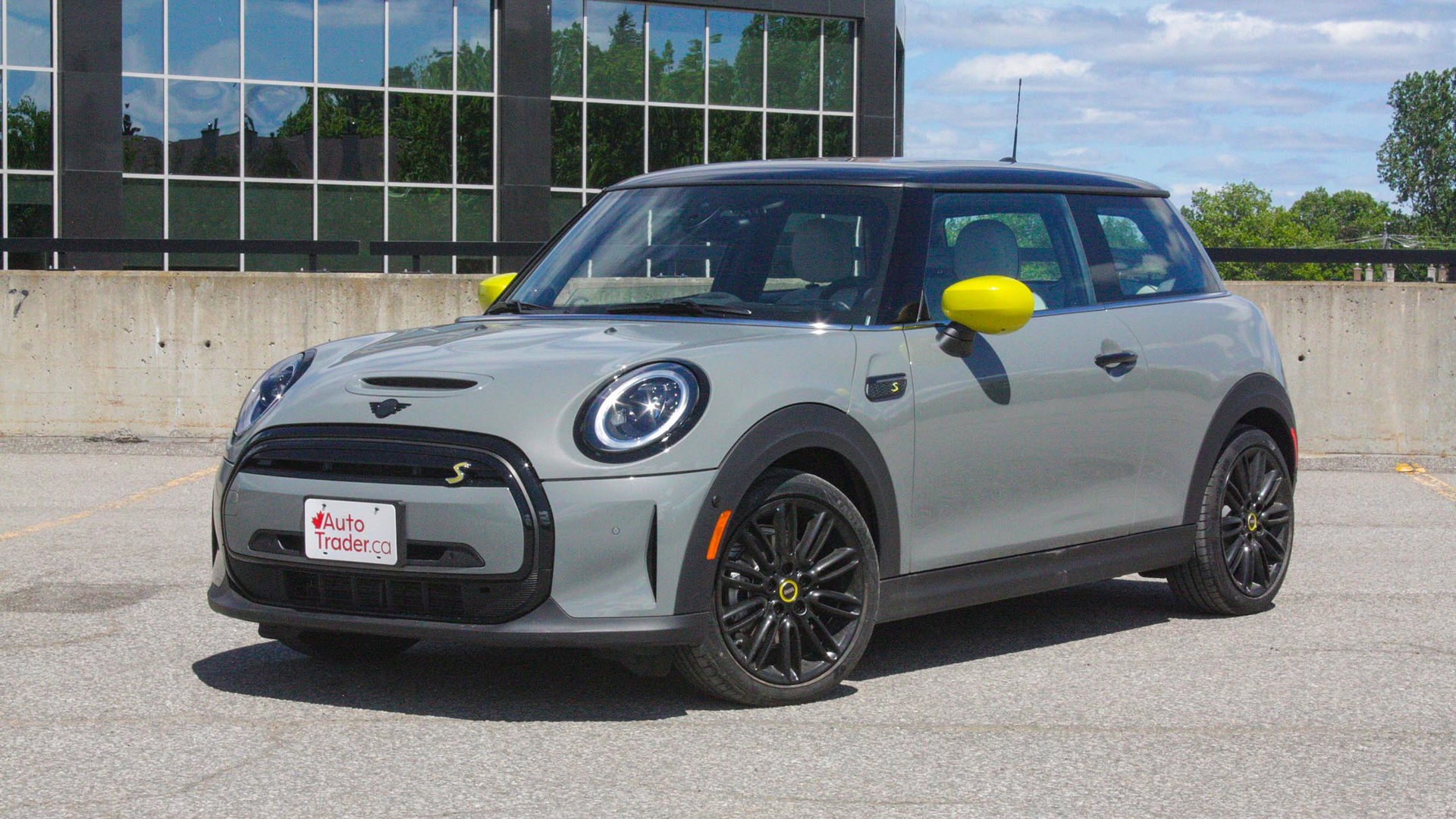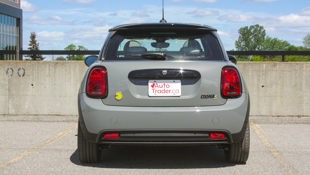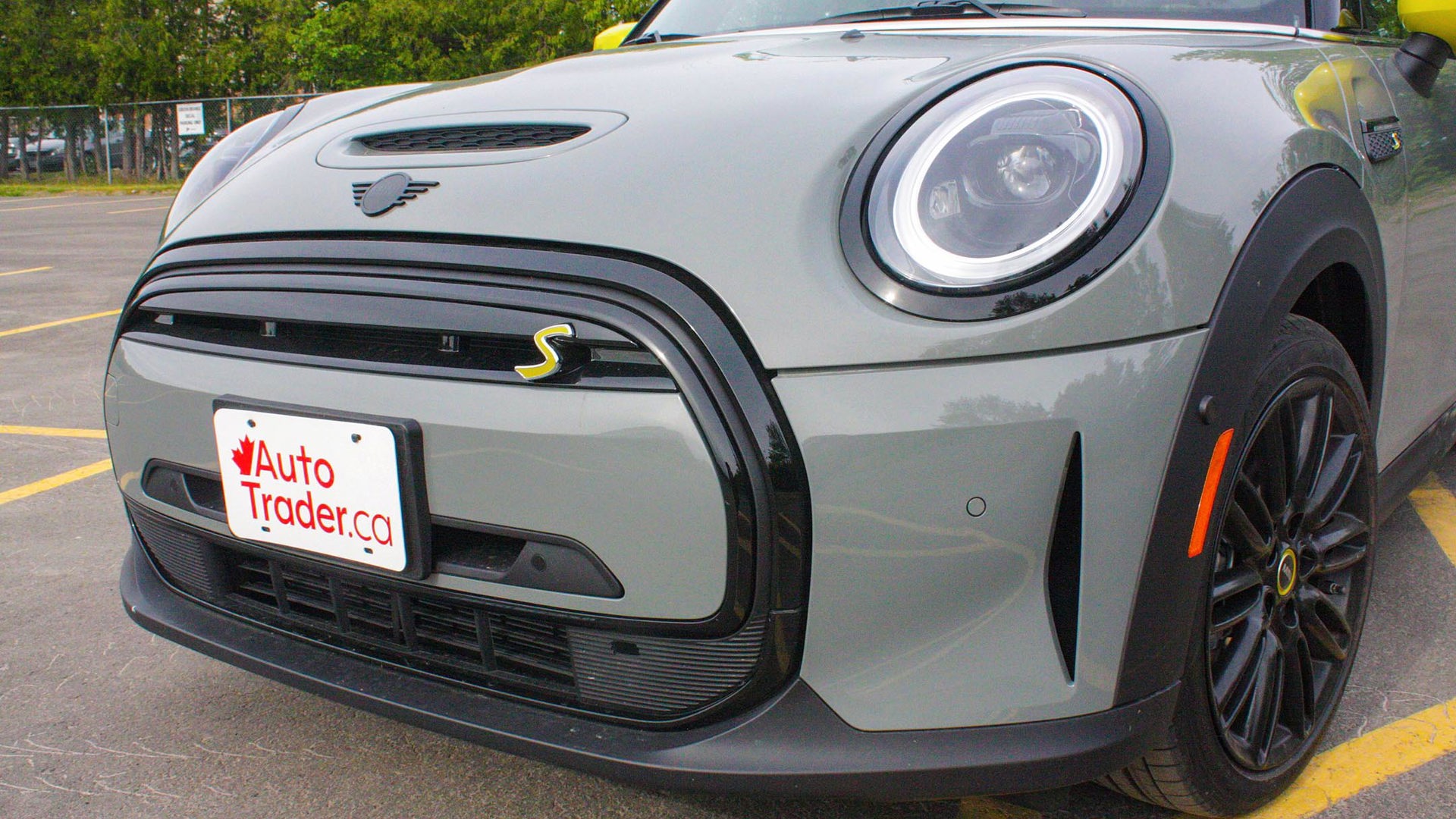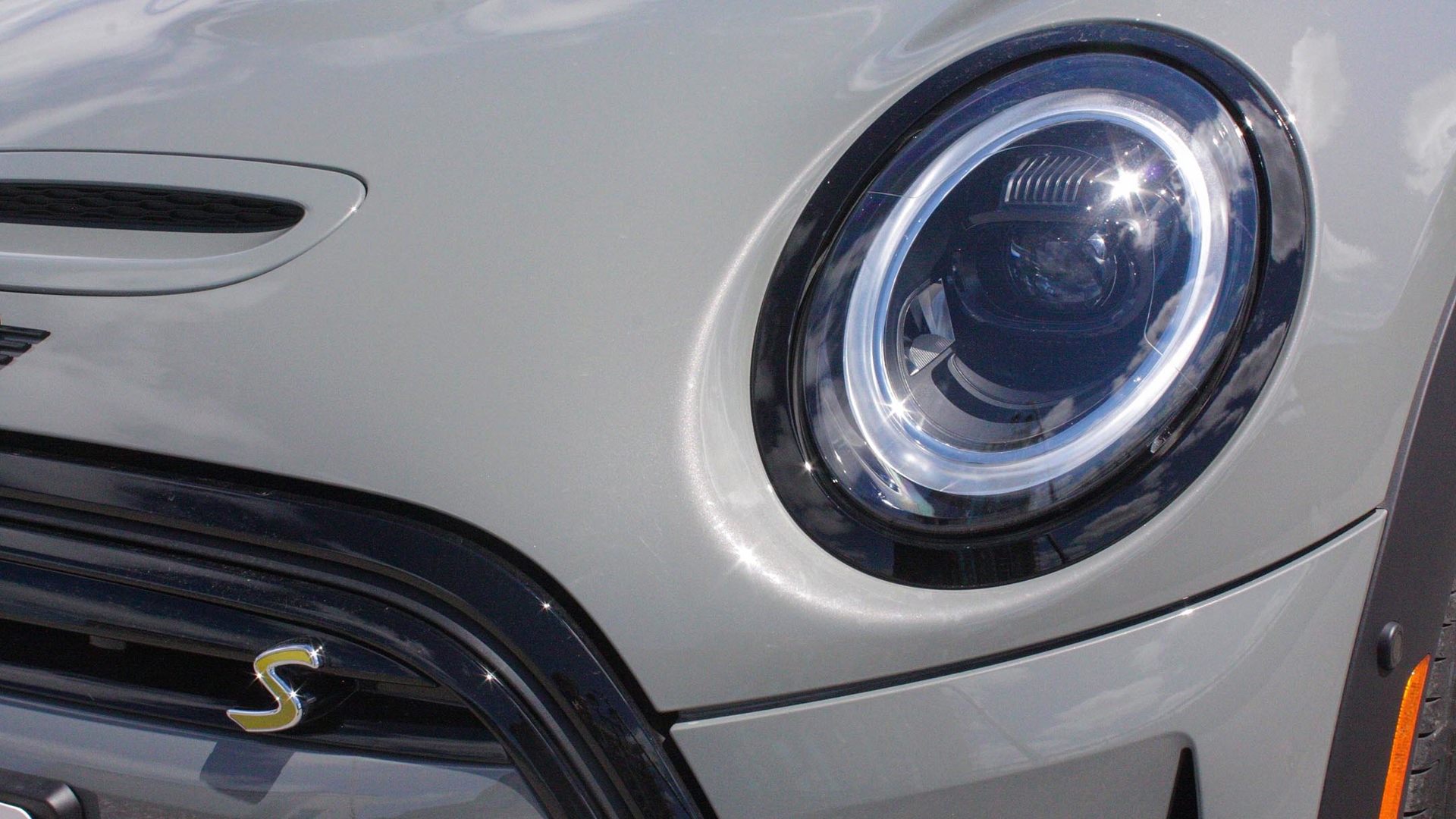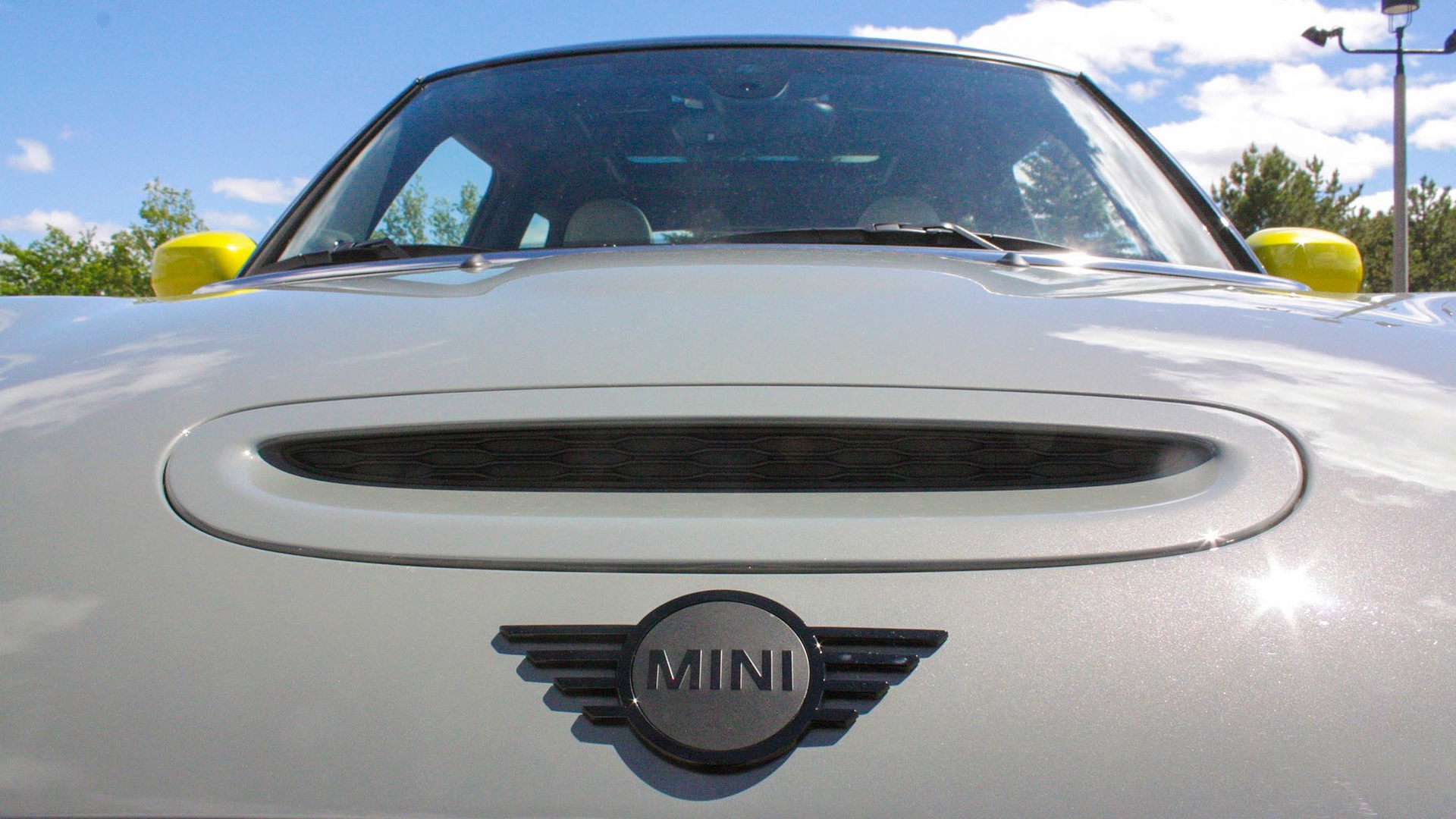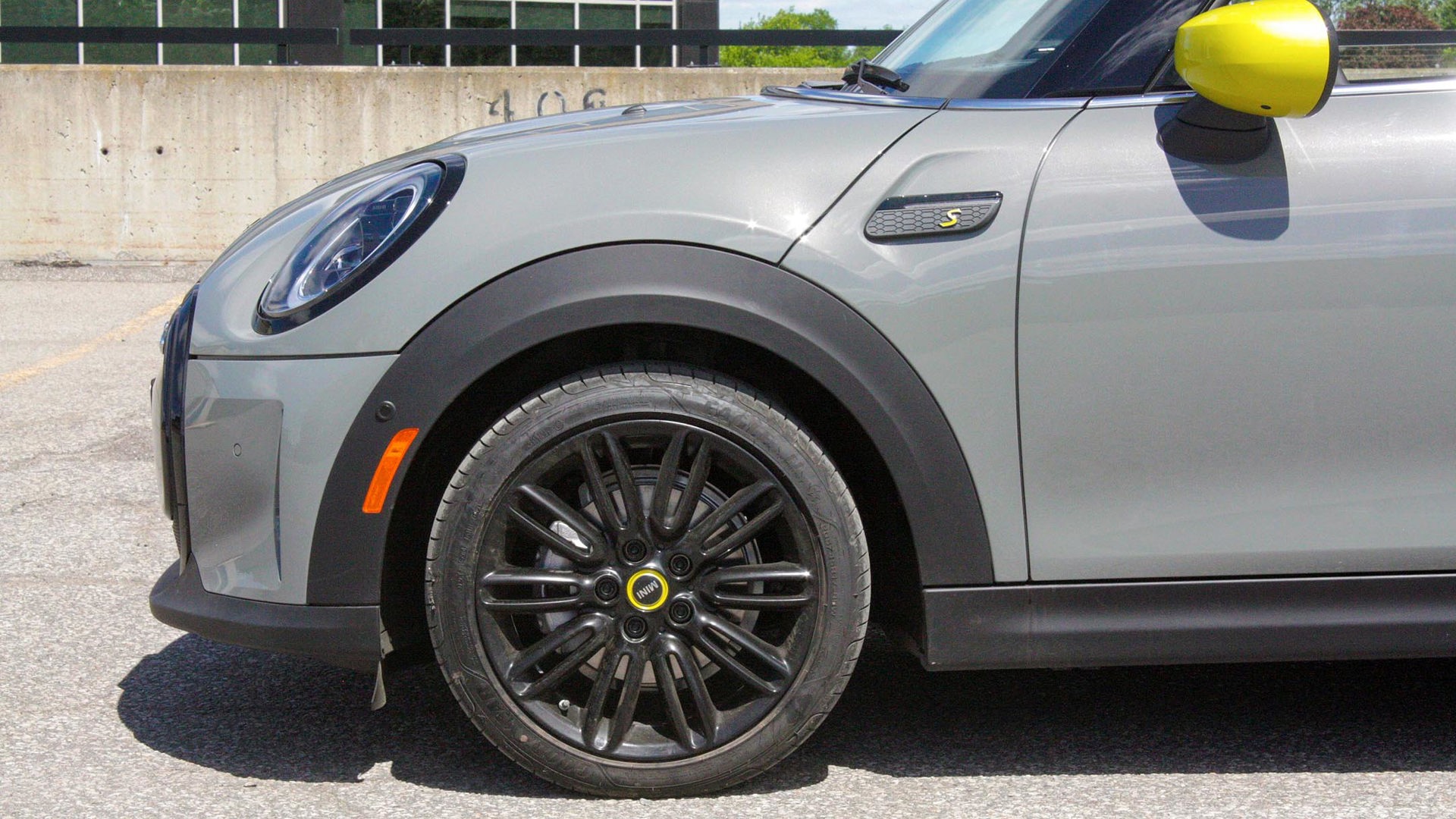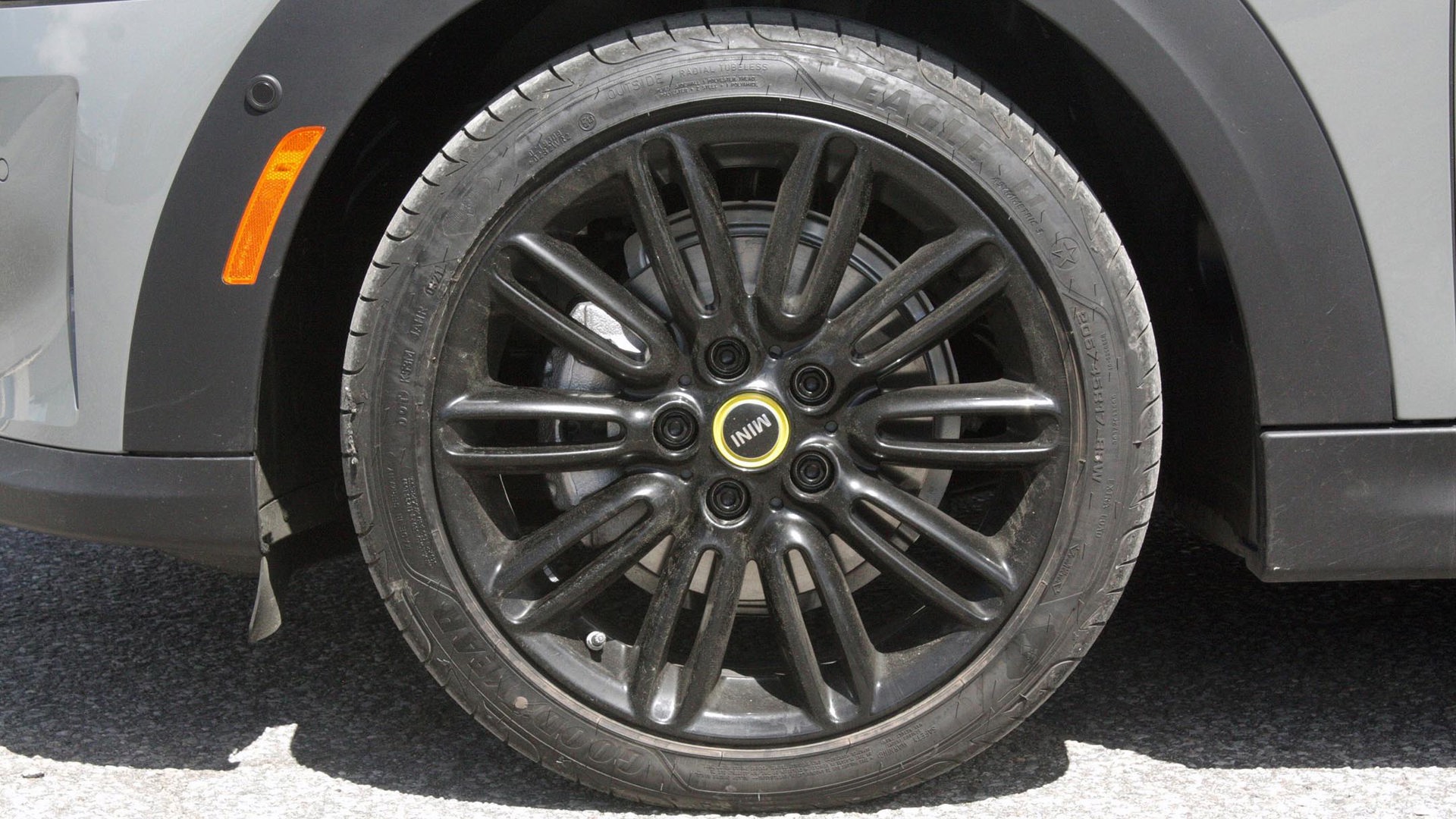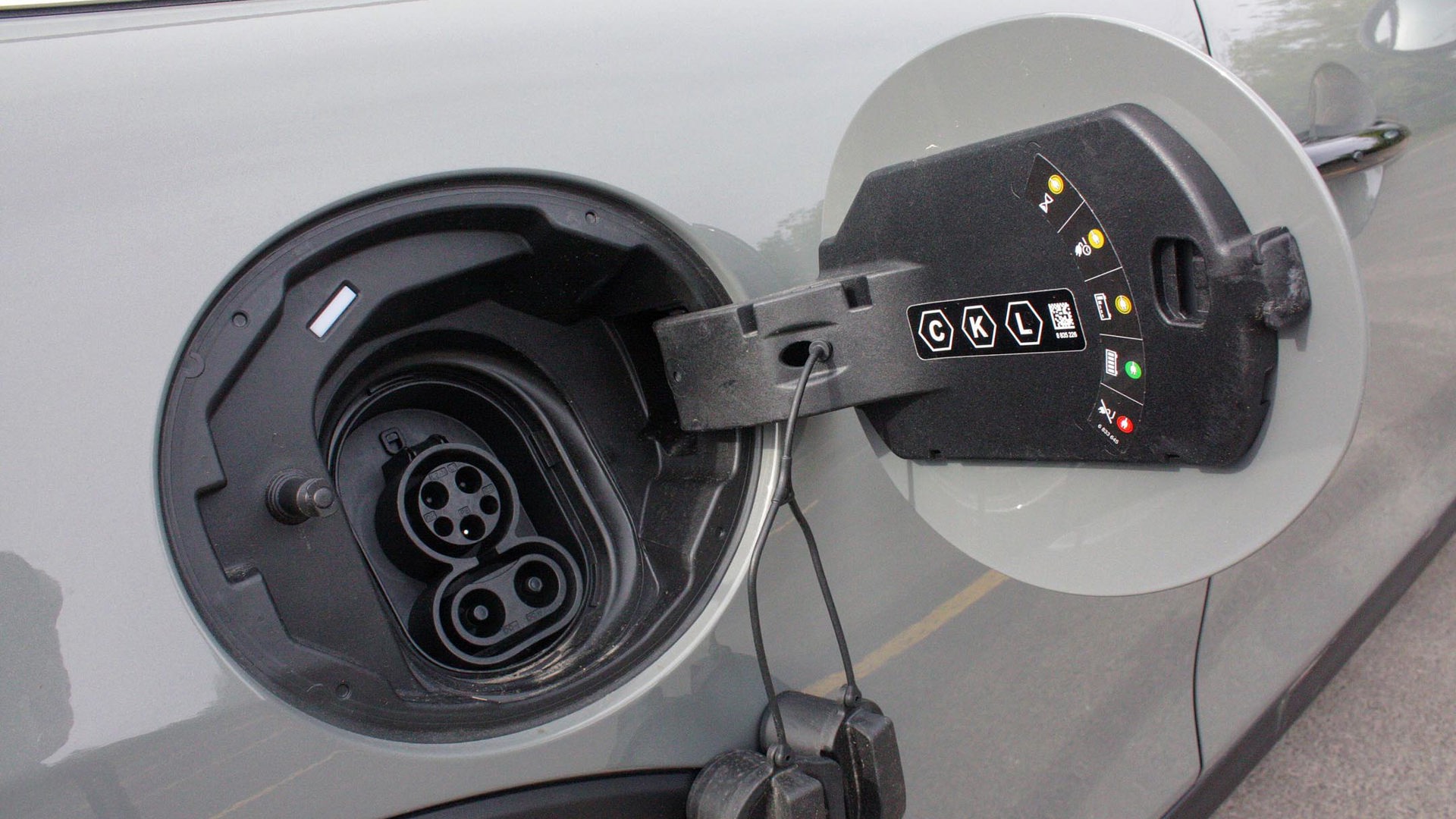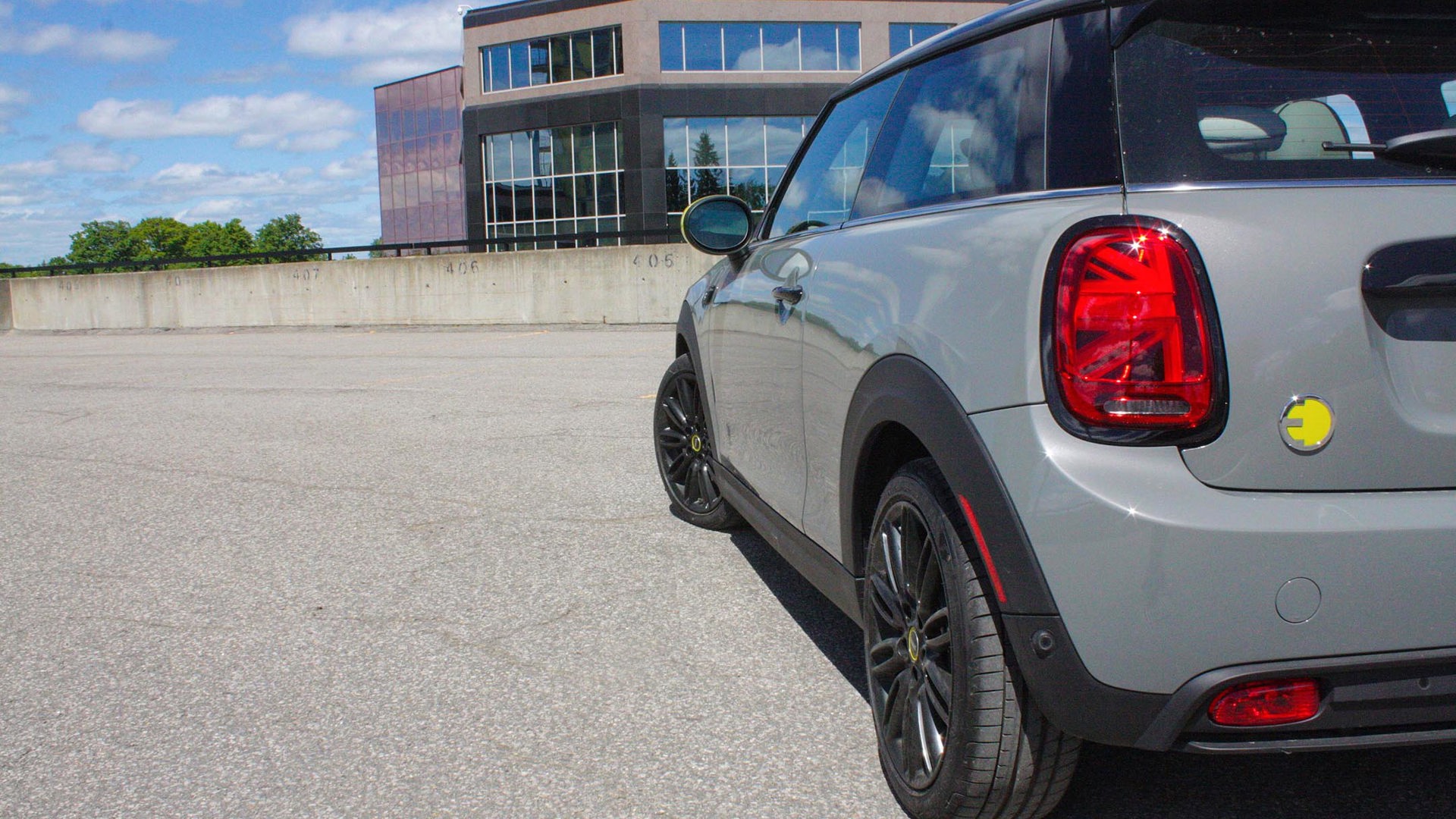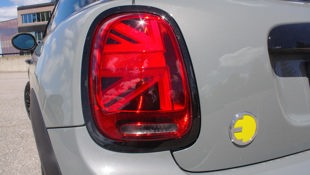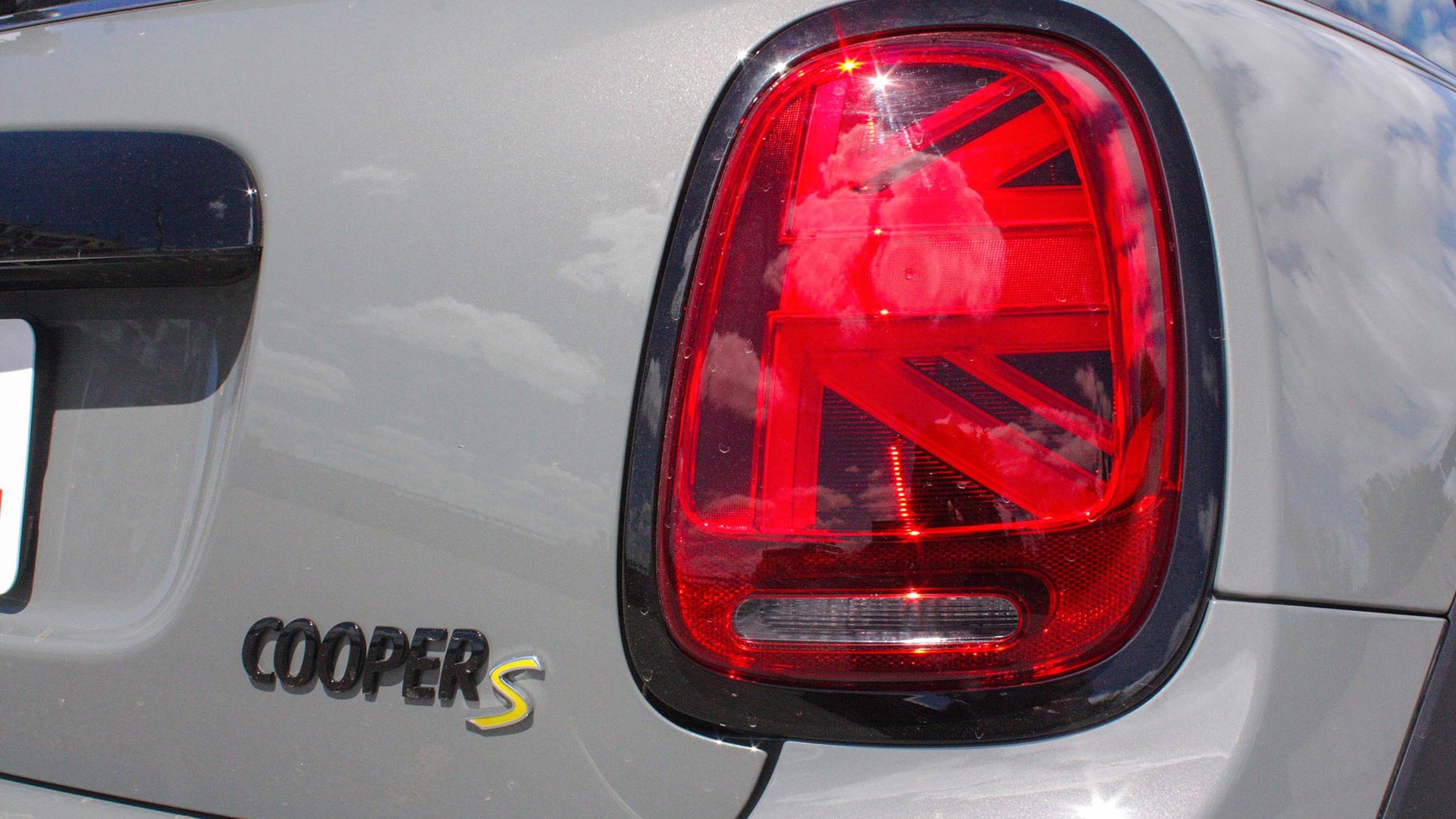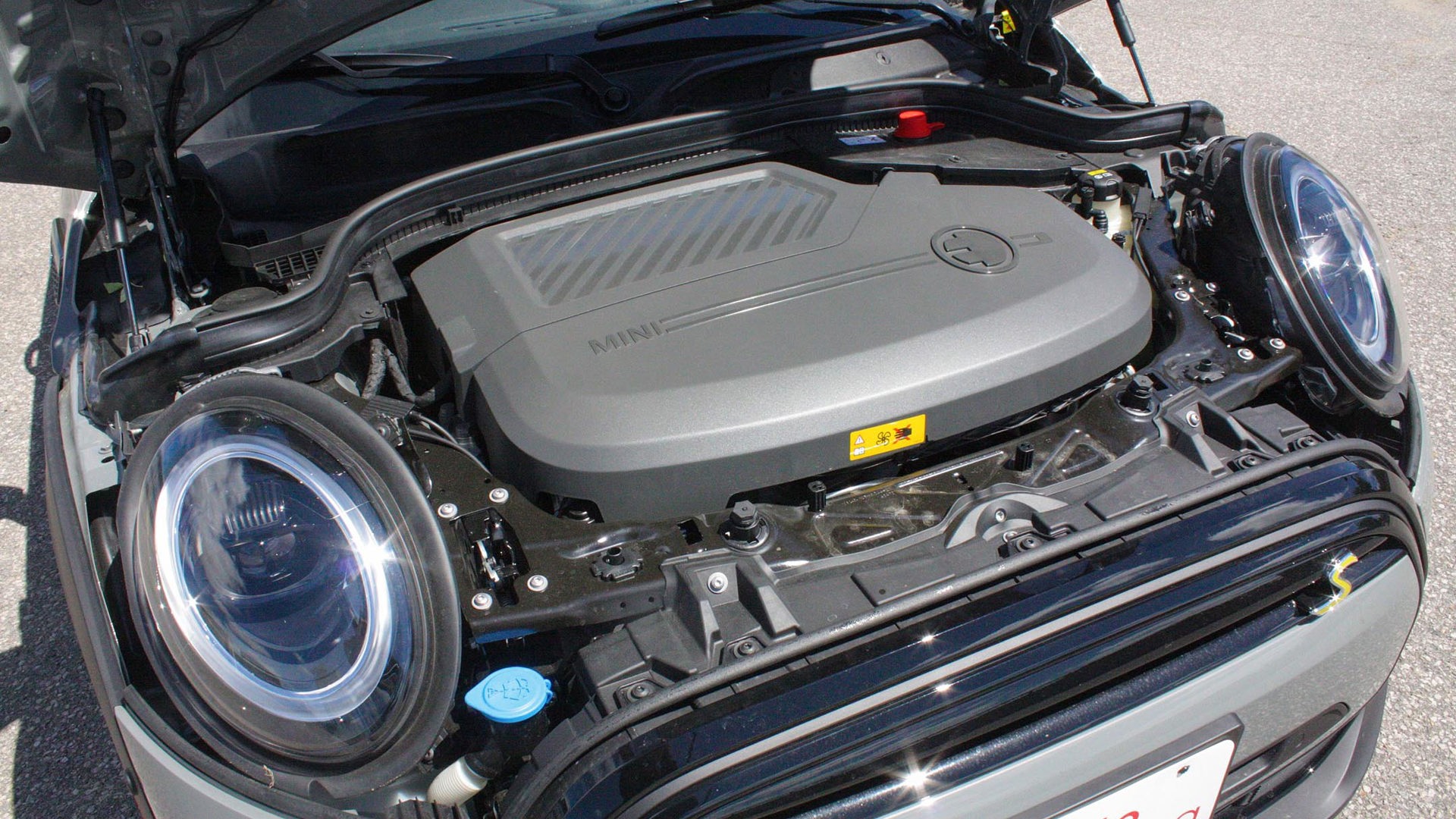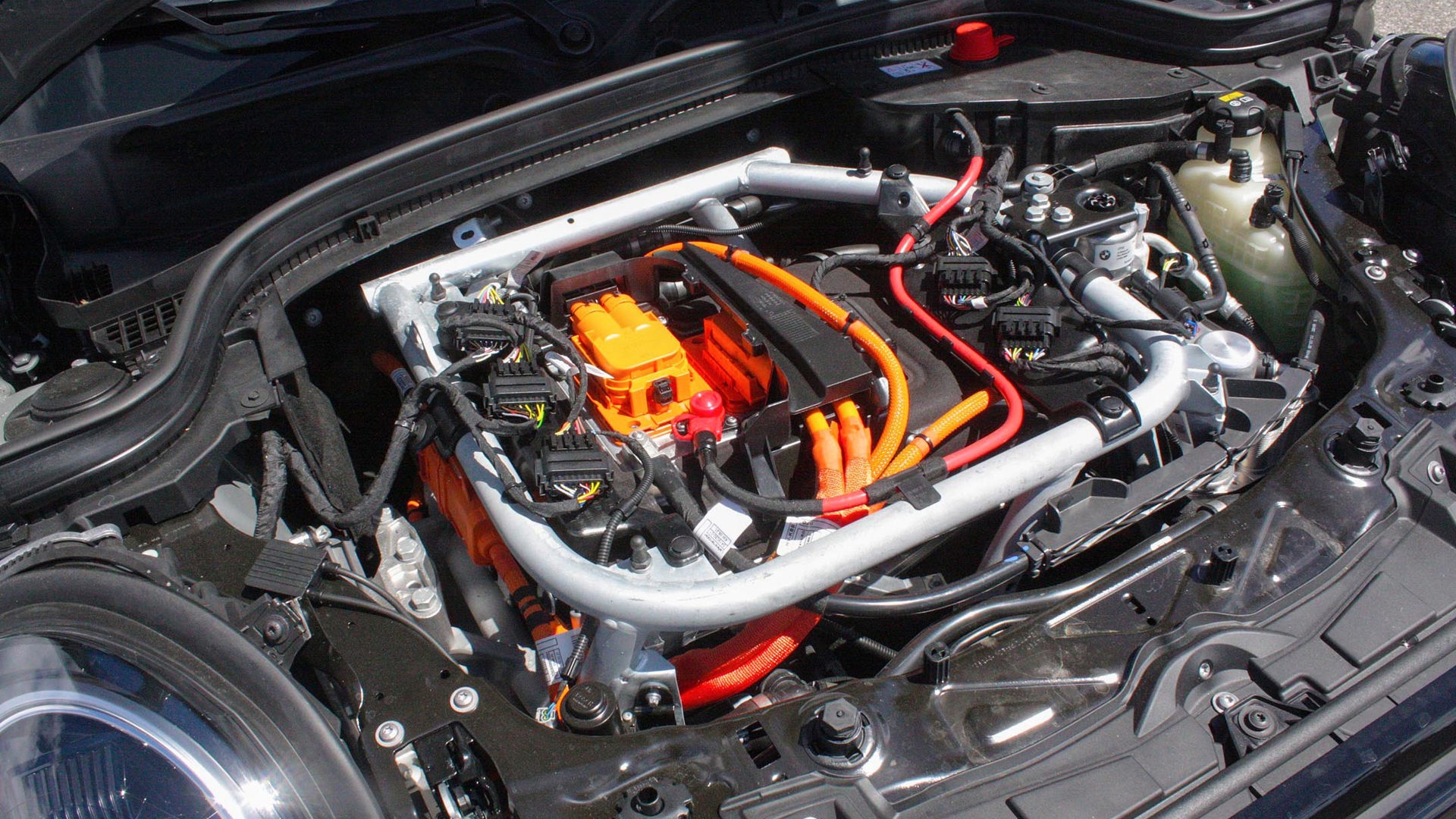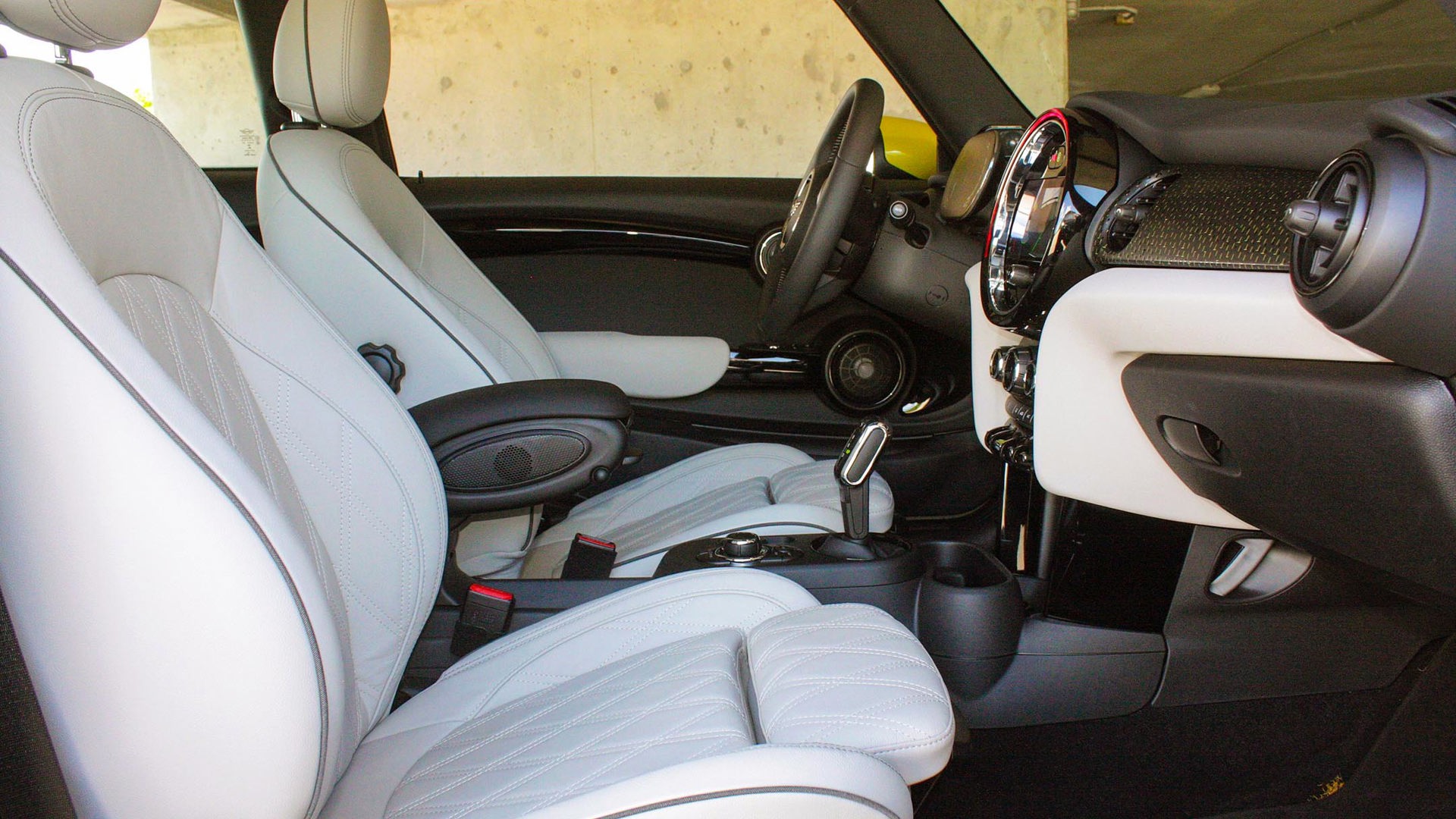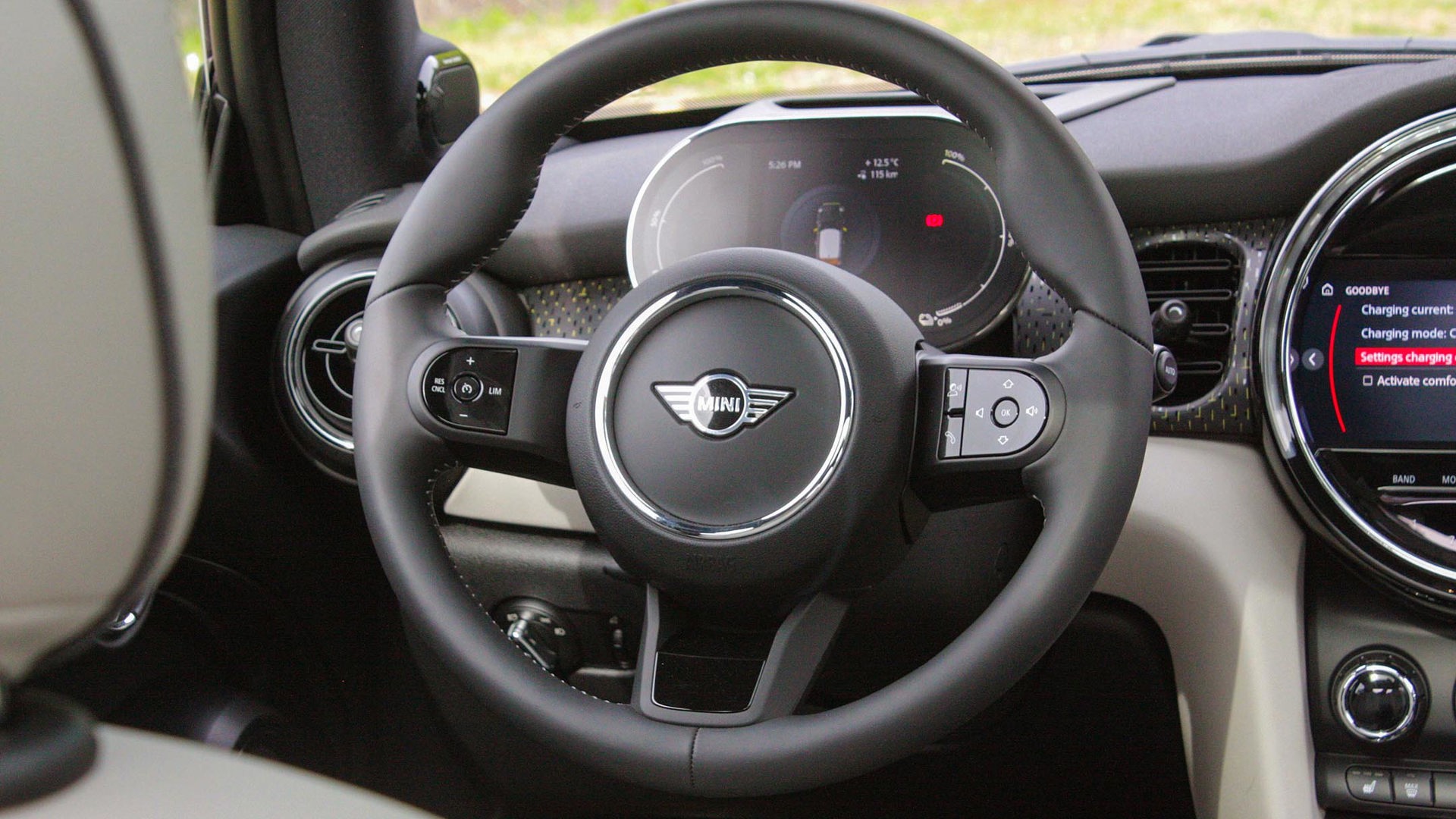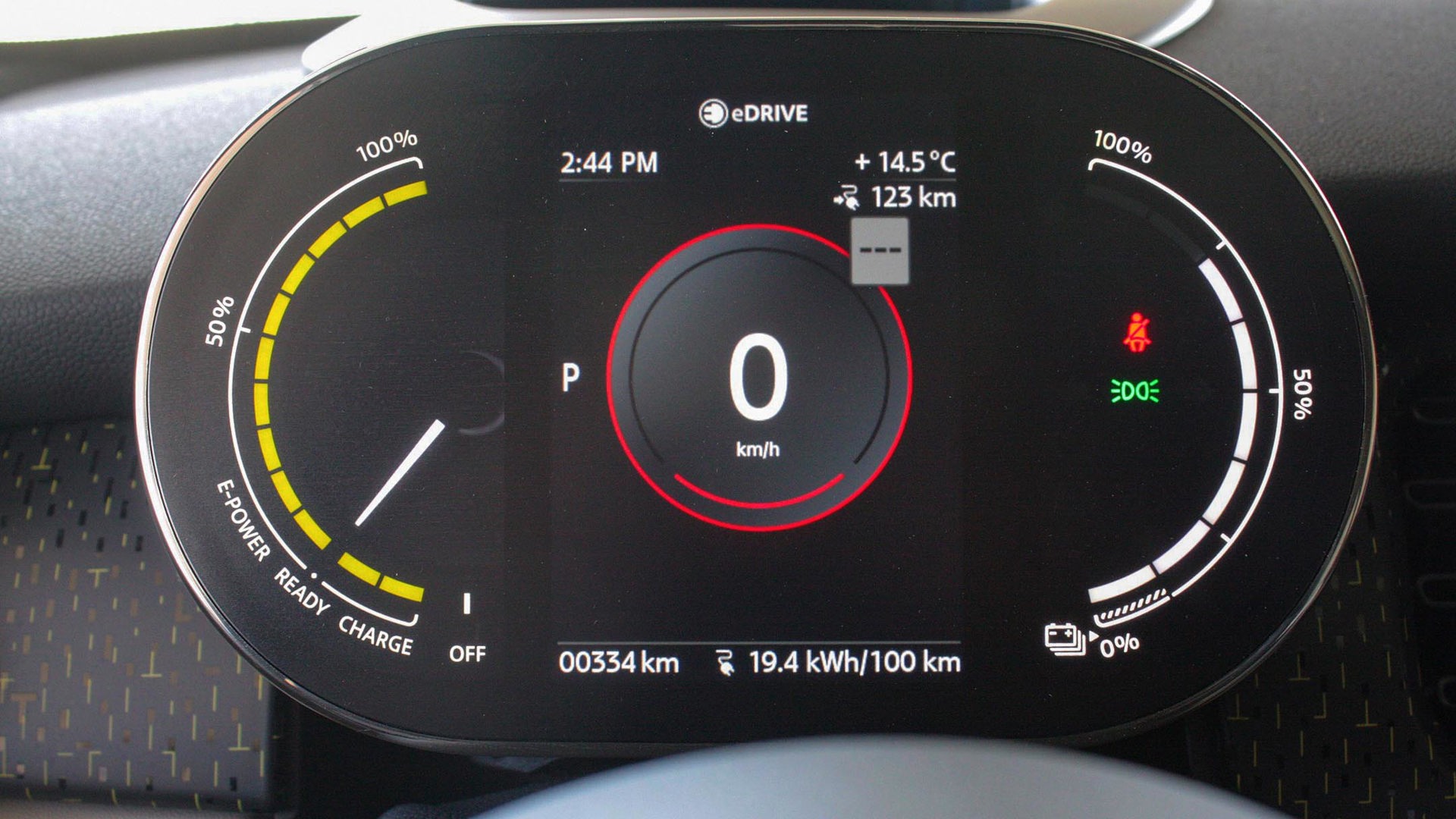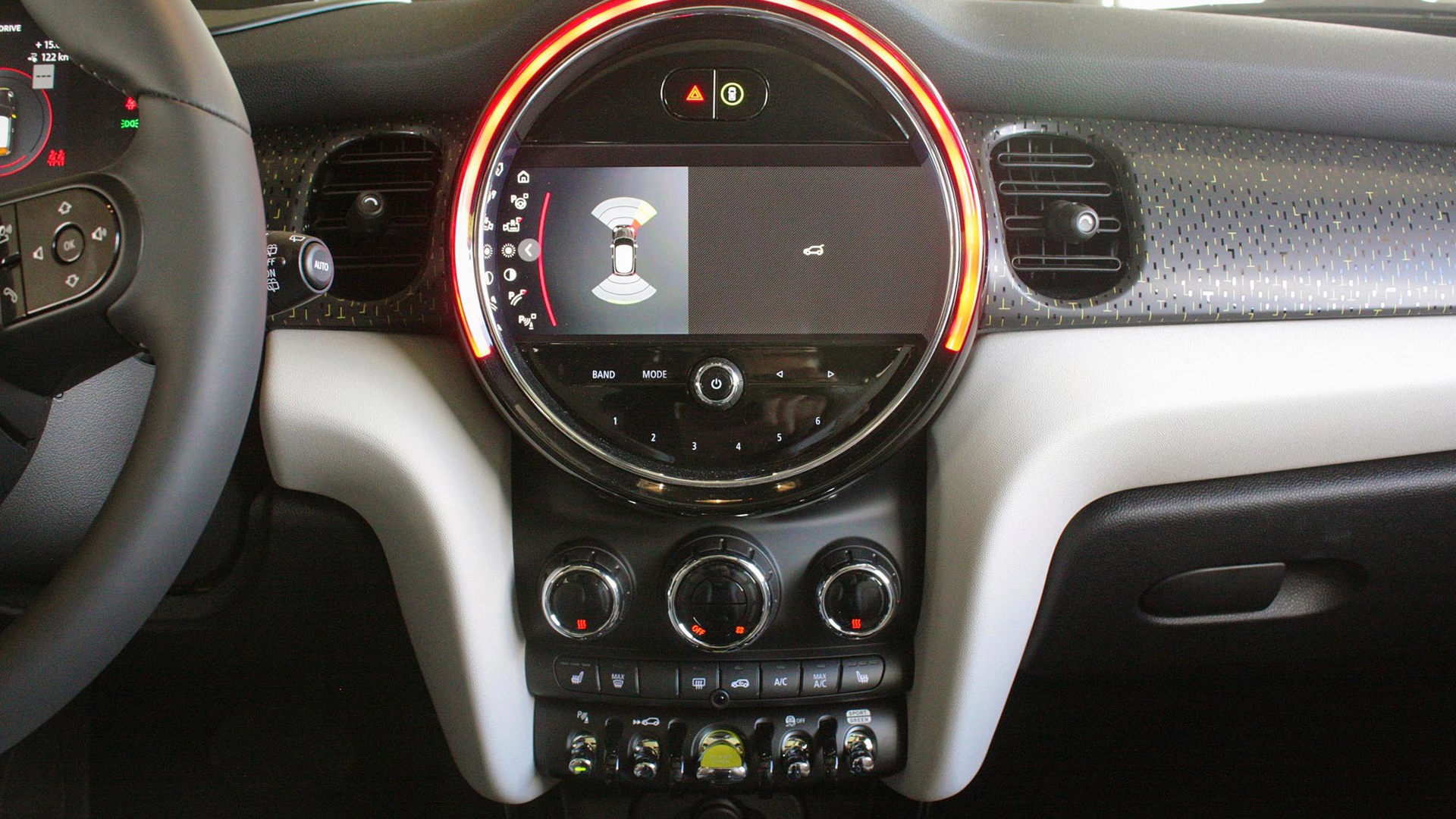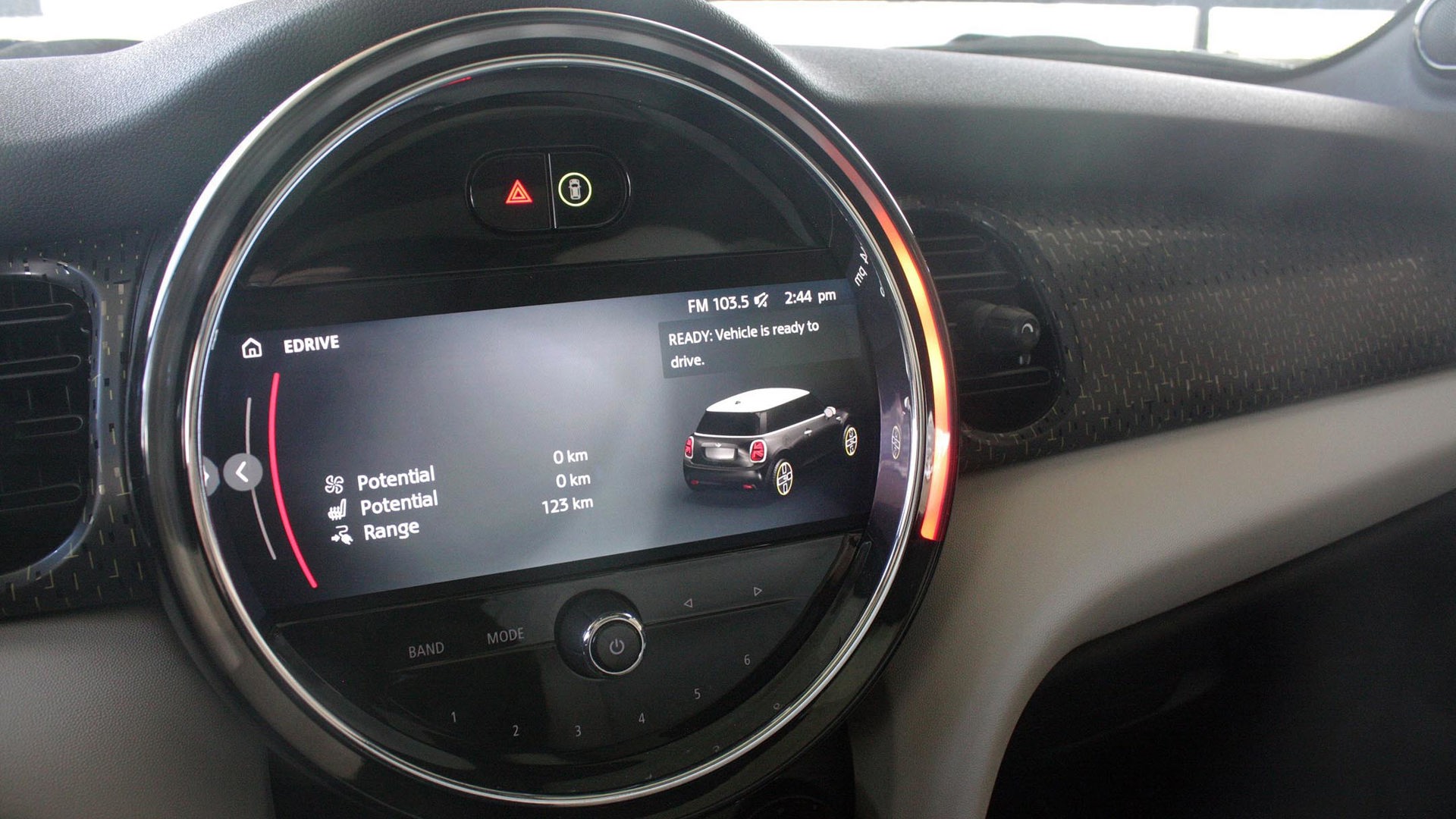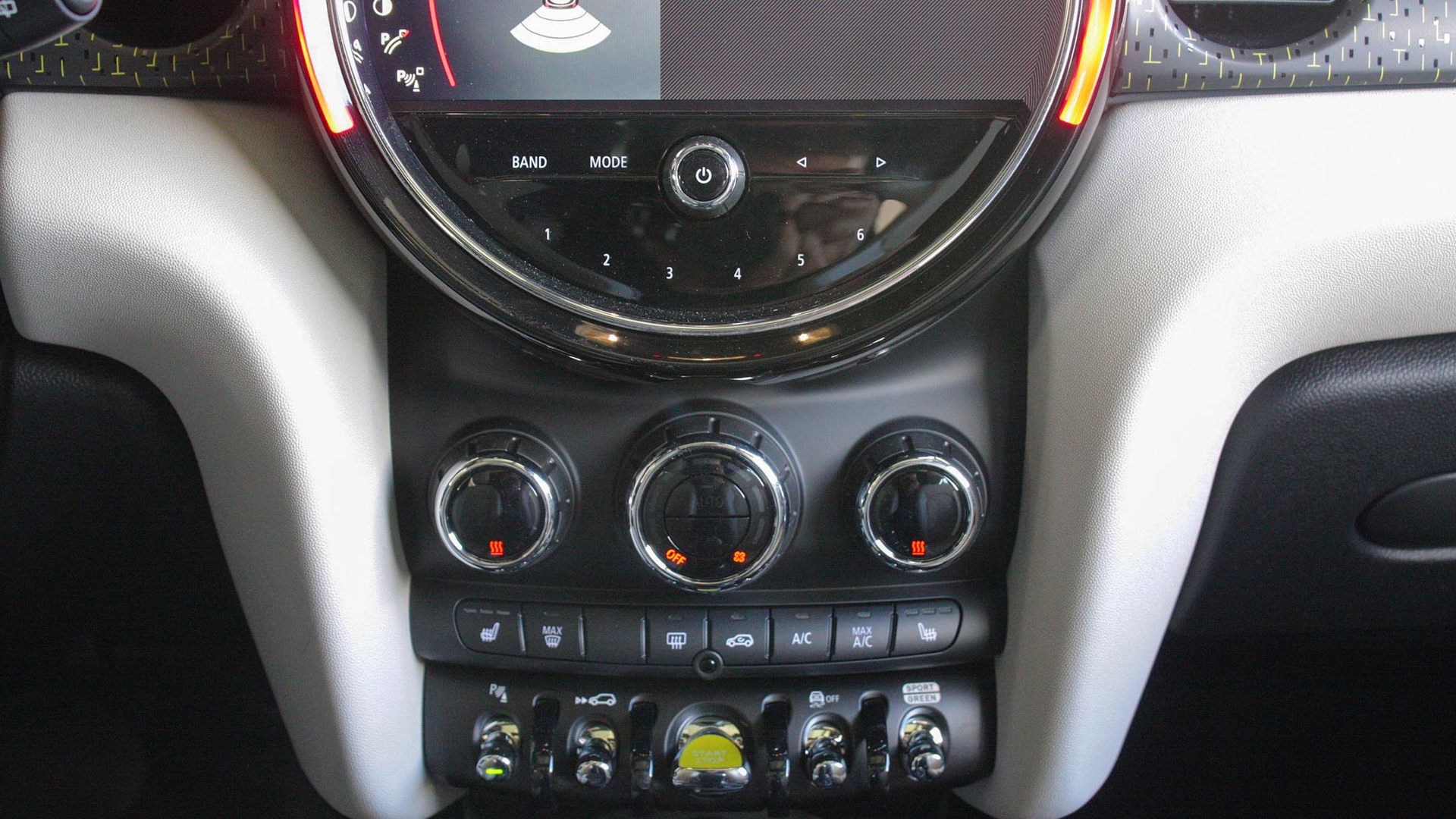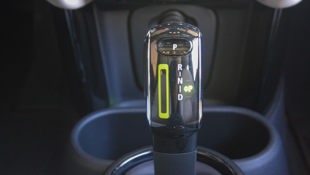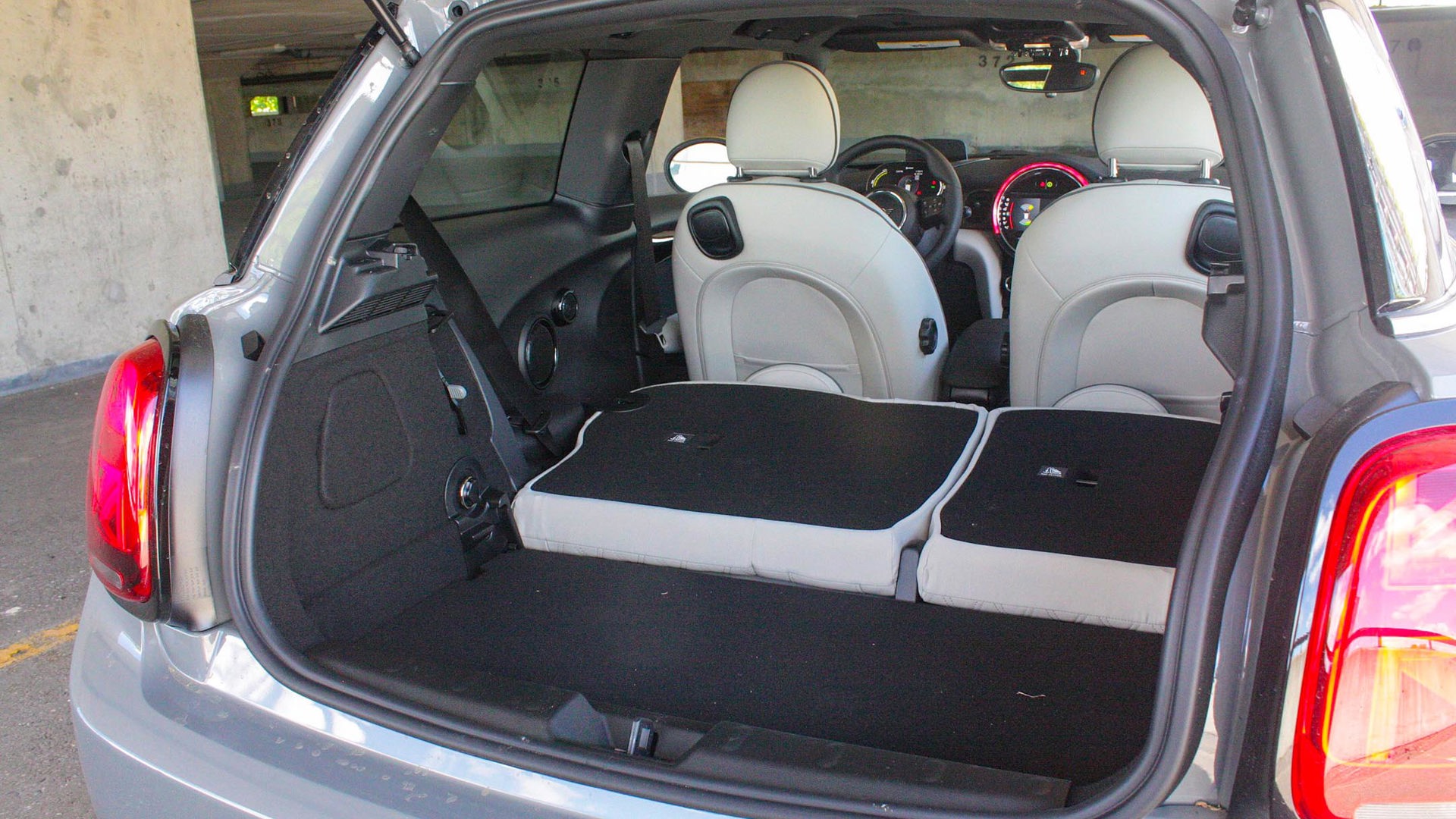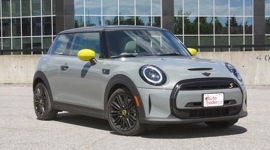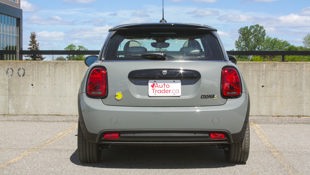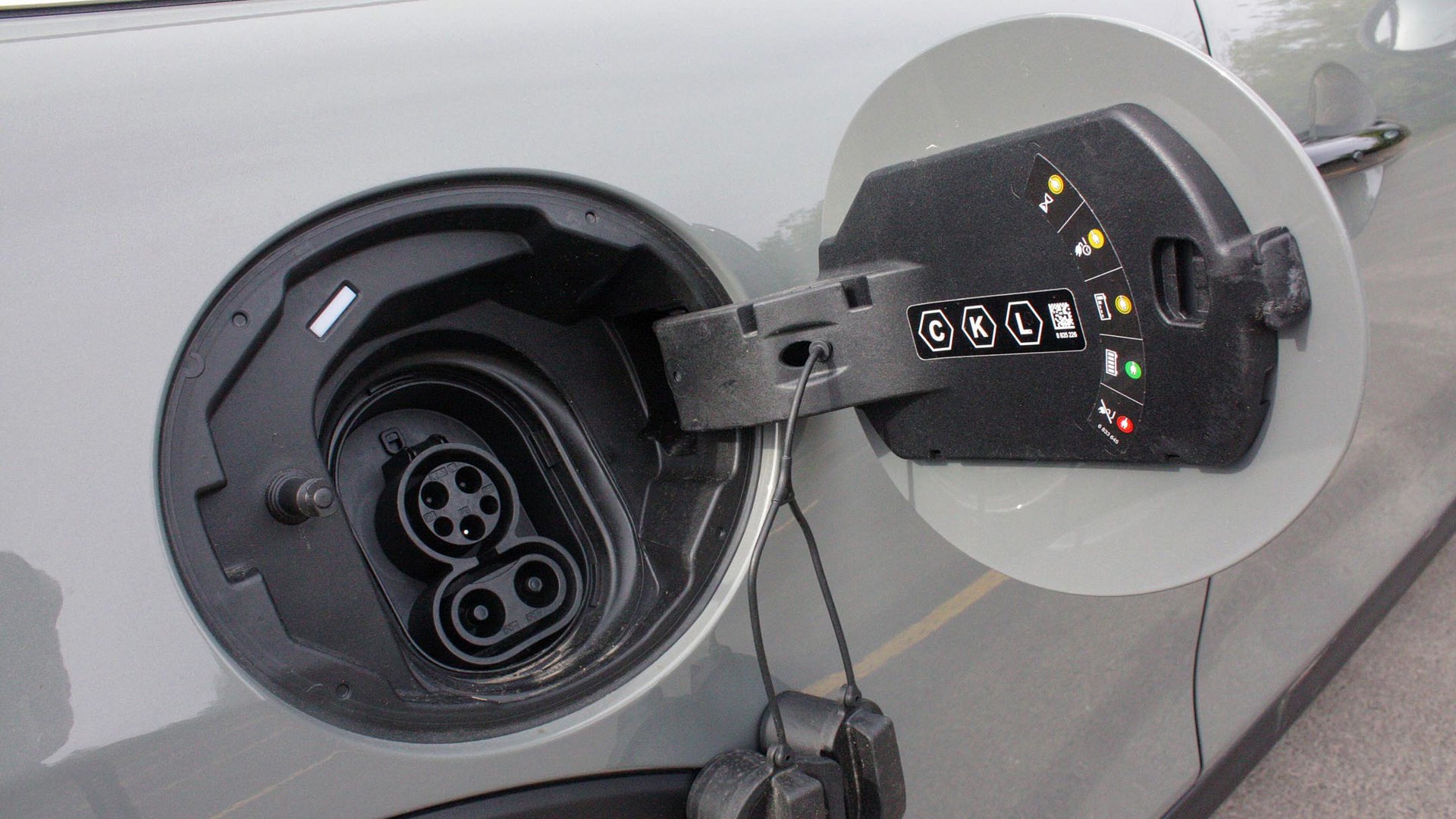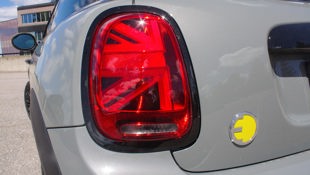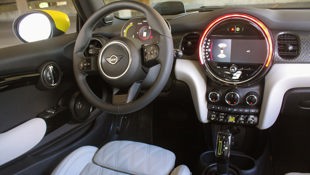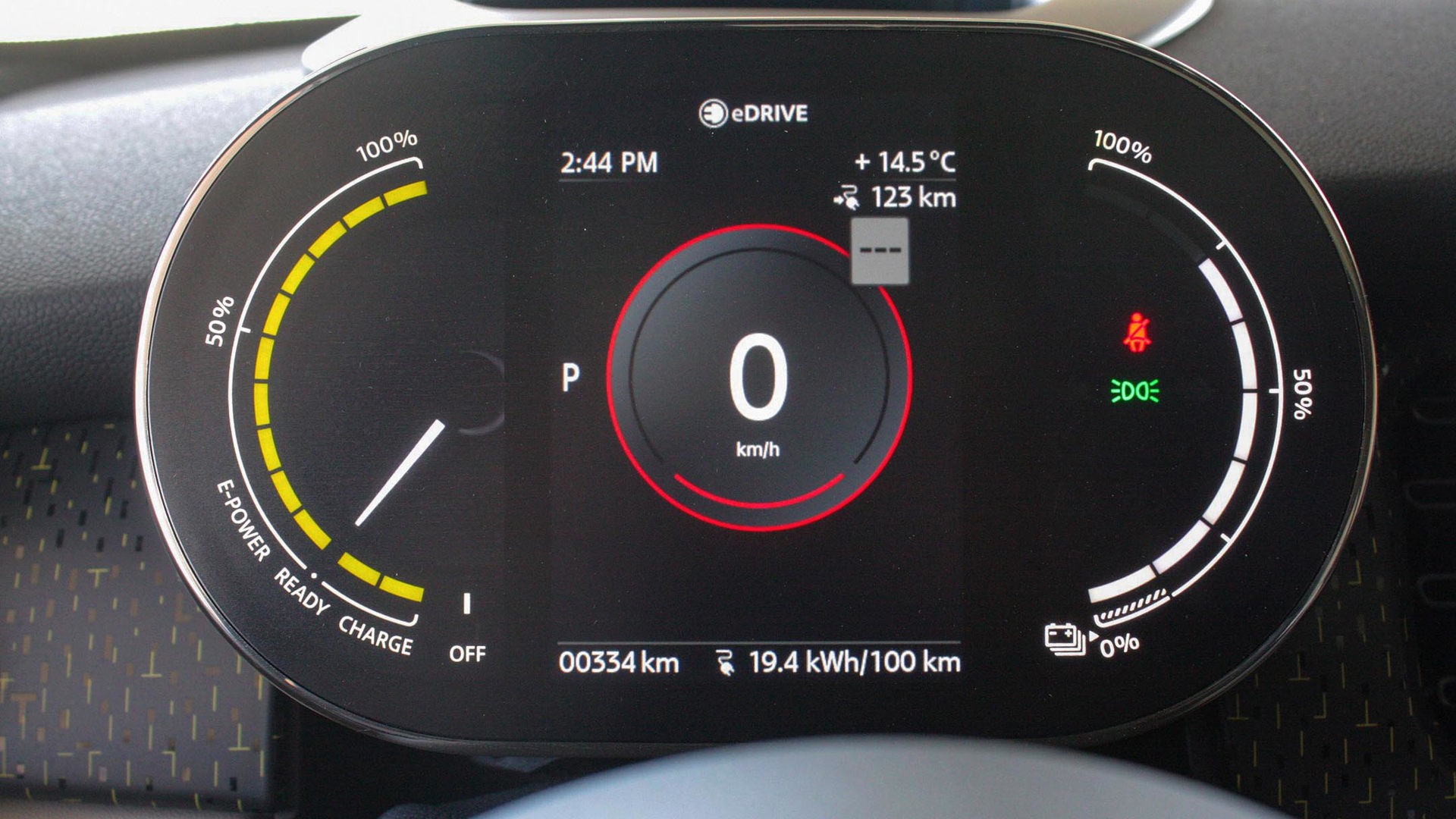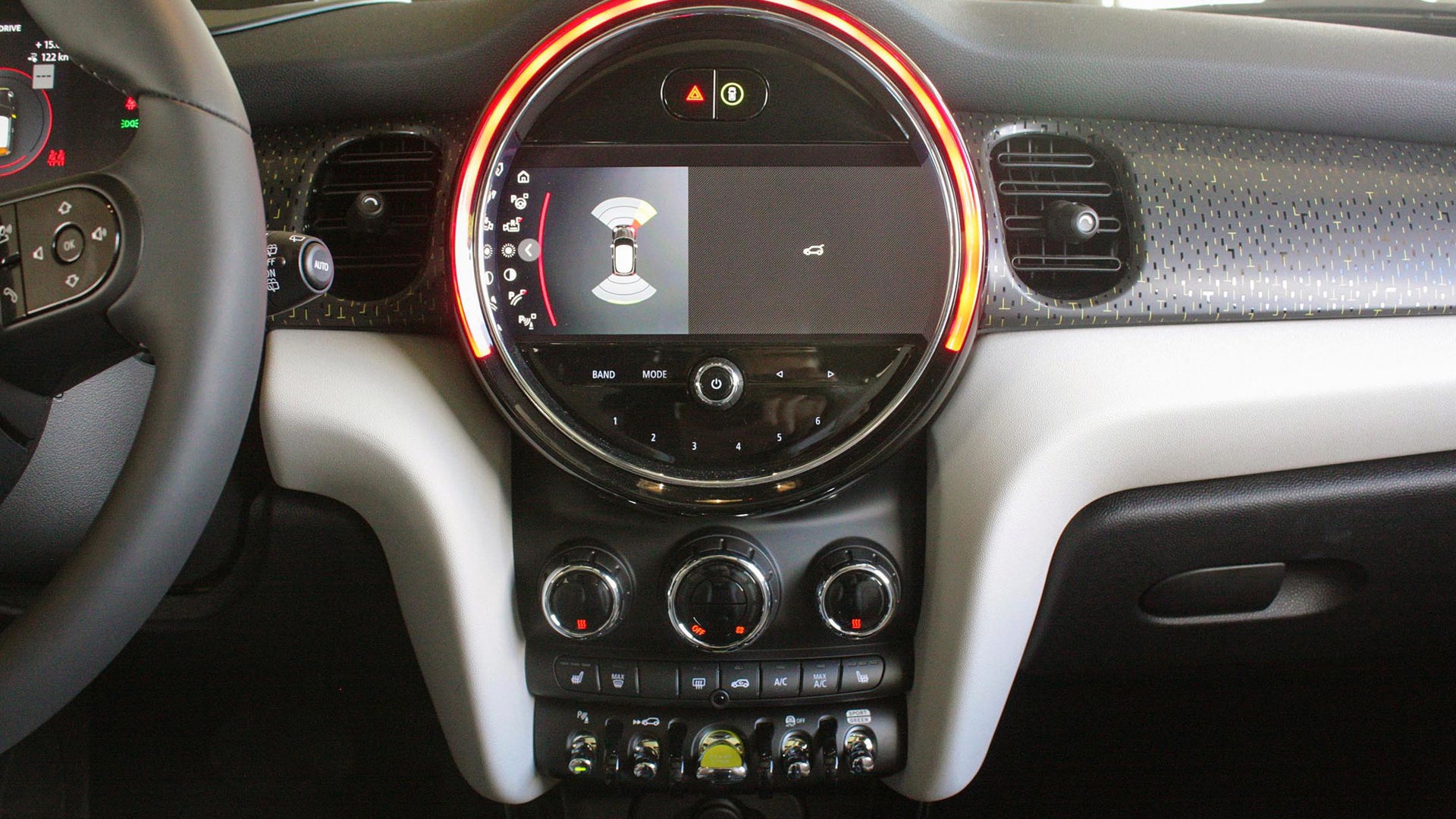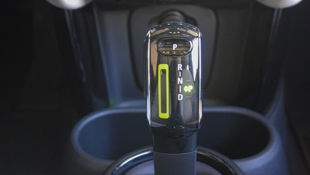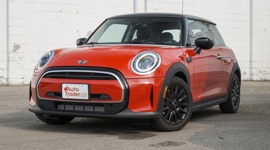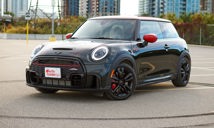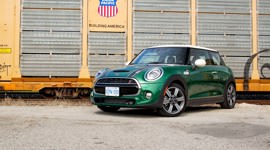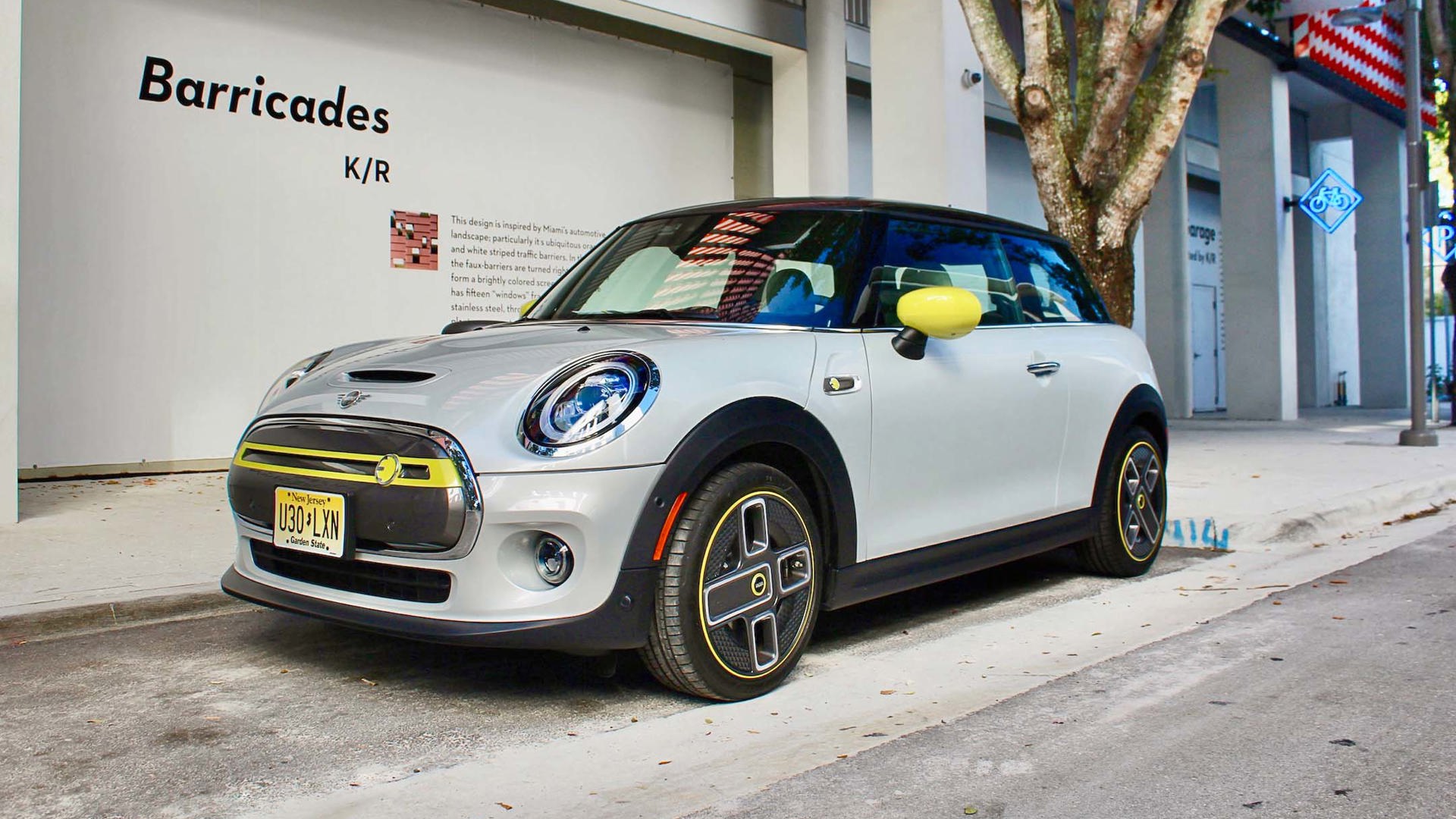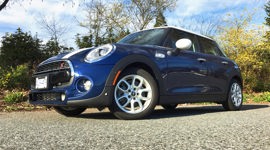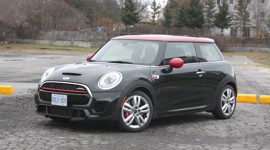 AutoTrader SCORE
AutoTrader SCORE
-
STYLING9/10
-
Safety8/10
-
PRACTICALITY6/10
-
USER-FRIENDLINESS8/10
-
FEATURES8/10
-
POWER8/10
-
COMFORT6/10
-
DRIVING FEEL8/10
-
FUEL ECONOMY9/10
-
VALUE5/10
A few years after launching as this brand’s first-ever all-electric vehicle, the 2022 Mini Cooper SE sports some styling tweaks to go with new tech and convenience features.
It also boasts some extra driving range – a whopping six kilometres more than before, to be exact, for a total of 183 km. That’s still the least of any electric vehicle (EV) you can buy today, save for the base version of the 2021 Tesla Model 3 and its 151 km.
On paper, the Cooper SE’s limited range puts it at a disadvantage compared to most other EVs. And yet its better-than-average driving feel and fun provides a distinct competitive advantage over its rivals. Just make sure you don’t stray too far from a charging station.
Power: 8/10
The all-electric Mini Cooper’s SE designation promises performance on a par with the mid-level gas-powered Cooper S, only without the gas. Mini lists the electric motor’s output at 181 hp and 199 lb-ft of torque, both of which are nominally less than the 189 hp and 207 lb-ft of torque made by that model’s gas engine. The brand says the SE accelerates from zero to 100 km/h in 7.3 seconds compared to the gasoline Cooper S’s 6.7-second sprint.
The SE’s instant torque – you get all of it from a dead stop – makes it feel at least as quick as the Cooper S from a start. Part of that sensation comes from the lack of mechanical noise that accompanies the SE’s acceleration. However, if you get your kicks from the rise and fall of a gas engine’s soundtrack as the car shifts through its gears the SE will leave you wanting more despite its pep.
Driving Feel: 8/10
Very little feels different about the way the Cooper SE goes over the road in enthusiastic driving compared to its gas-powered counterpart. The electric drivetrain adds weight, but you’d need to drive them back-to-back to get a sense of how it affects the car’s handling. Taken on its own, the Cooper SE is as much fun to hustle around corners and highway ramps as its gas-only sibling.
That sharp handling comes with a harsh ride, however. Maybe your humble author’s simply getting old, but a little more compliance in the suspension would make the Cooper SE a lot easier to live with in around-town driving – especially considering that’s all its limited driving range is suited for.
Value: 5/10
At a starting price of $24,490 for its base gas-powered model, the Mini Cooper is not a great value in the quickly disappearing subcompact car segment – that is, unless you value its class-above handling and driving feel. The same is true of the 2022 Mini Cooper SE, only with the added element (and price) of its electric powertrain. It starts at $40,990 before fees, with this tester nearly touching $52,000 before tax with the Premier+ package ($8,000) and piano black exterior trim ($350).
That entry-level 151-km Tesla Model 3 starts at $46,389. Next up the ladder for driving range is the 240-km Nissan Leaf, at $44,298. For about $53,000, meanwhile, you can get a Tesla Model 3 Standard Range Plus with better than 400 km on a charge, while the Chevrolet Bolt also promises to go more than 400 km for a base price of $38,198.
Safety: 8/10
The battery-powered SE is the only version of the Mini Cooper that comes standard with new-for-2022 lane-departure warning, steering-responsive headlights, forward collision warning with auto emergency braking, and adaptive cruise control that works in stop-and-go traffic. In Premier+ trim, it also gets front and rear parking sensors, building on the mid-range Premier’s rear-only sensors.
Features: 8/10
New features for 2022 include an electric parking brake, heated steering wheel, and lane departure warning, which are all optional with the gas-powered Cooper.
Other standard features include 16-inch alloy wheels, leatherette upholstery, a digital gauge display, and built-in navigation running through an 8.8-inch touchscreen. A Premier upgrade adds 17-inch wheels, power-folding and auto-dimming side mirrors, an auto-dimming rearview mirror, panoramic sunroof, leather upholstery, rear parking sensors, and an upgraded stereo. This Premier+ tester builds on that with a Nappa leather steering wheel, head-up display, and wireless smartphone charging.
That last item is far from perfect, though. Wireless charging is one of your author’s favourite tech features, but it was rendered useless during testing because the charging pad – tucked under the lid of the centre console armrest – was too small to fit an aging LG G7 ThinQ in its case. Removing the case was an easy solution, but phones larger than that won’t fit at all. If wireless charging is one of your reasons for adding the $8,000 Premier+ package, make sure your phone fits first.
Practicality: 6/10
In its two decades on the market, the Mini Cooper three-door has grown, and as much as you’ll hear complaints that the current version is no longer “mini,” this is still a small car. At 5-foot-7 on a good day, there was barely enough rear-seat legroom for your author to sit in the back, though headroom is reasonable. Realistically, this is a two-seater in which you can occasionally bring along two more friends for short trips.
In a surprising nod to the Cooper SE’s practicality, it can accommodate a bike inside with the back seats folded and the passenger seat pushed and angled all the way forward. (If you plan on hauling a bike with the Cooper SE with any frequency, save yourself the hassle and get a roof-mounted rack.)
Otherwise, the battery-powered Mini SE doesn’t lose any interior space in the conversion from gas power.
Comfort: 6/10
Hop into one of the Cooper SE’s front seats and you’ll notice they are heavily bolstered to provide lateral support in corners. And if you’re not particularly slim, you’ll also notice those bolsters digging into your hips and back. This is a small car that’s still designed primarily for small people.
Front-seat headroom wasn’t an issue during testing, even underneath the sunroof. However, with the driver’s seat as high as comfortably possible, the rearview mirror ended up obscuring forward visibility.
User Friendliness: 8/10
This car’s 2022 update makes a digital gauge cluster and 8.8-inch central infotainment display standard across the Mini Cooper lineup. Both were optional in last year’s car. That central screen is where you access the BMW-designed interface, which has evolved into a reasonably intuitive one over the years. There’s a bit of a learning curve, especially if this is your first exposure to a modern infotainment system, but it’s not difficult to master.
It uses a rotary controller on the console in addition to a touchscreen, which some users may find requires less concentration – and causes less distraction – to use while driving. The audio controls below the screen, like radio presets and audio mode selector, are now touch-sensitive instead of hard buttons, which isn’t quite as intuitive.
This test car’s Premier+ package included a head-up display that projects onto a little screen that pops up out of the dash. From the driver’s seat, the head-up information appears just a couple of inches higher than the main gauge cluster. Anything that puts the info you need closer to your view of the road is good, though systems that project directly onto the windshield provide more flexibility and better visibility.
Styling: 9/10
The Mini’s growth spurt has resulted in styling that has lost some of its charm over the years. Still, the details matter, and this tester’s combo of Moonwalk Grey paint and yellow mirror caps looked sharp. Taillights that illuminate with the detail of the Union Jack flag are nifty, too, even if they honour the British heritage of a car now built by a German company.
Fuel Economy: 9/10
The Mini Cooper SE averaged 18.3 kWh/100 km (about 2.1 Le/100 km) during a week of city driving. That compares well to Mini’s energy consumption estimates of 17.6 kWh/100 km in city driving and 20.9 on the highway. Charging twice at home during testing put a total of 30 kWh of hydroelectricity into the battery. Both times were done overnight at an off-peak hydro rate of $0.082/kWh, which means the 141 km added to the odometer cost $2.46.
The Verdict
What holds the 2022 Mini Cooper SE back is its limited battery capacity and driving range. That doesn’t look great next to its price tag – especially if you’re looking for a car that can take you to 95 per cent of places you want to go, including out-of-town drives.
Pricing aside, the Cooper SE does just fine as a daily driver. Most of the time, 183 km of range would be plenty for city driving needs, especially if charged every night. However, it’s not unreasonable to want more range from a $40,000 EV on principle alone.
Where the Mini Cooper SE succeeds is in delivering the kind of driving feel and performance the brand has conditioned buyers to expect from this diminutive hatchback. You may not be able to go very far in the Cooper SE, but you’ll have lots of fun getting there.
| Engine Displacement | 135 kW |
|---|---|
| Engine Cylinders | n/a |
| Peak Horsepower | 181 hp |
| Peak Torque | 199 lb-ft |
| Fuel Economy | 2.0 / 2.3 / 2.1 Le/100 km cty/hwy/cmb, 17.6 / 20.9 / 19.1 kWh/100 km cty/hwy/cmb |
| Cargo Space | 246 / 962 L seats down |
| Model Tested | 2022 Mini Cooper SE Premier+ |
| Base Price | $40,990 |
| A/C Tax | $100 |
| Destination Fee | $2,245 |
| Price as Tested | $51,685 |
|
Optional Equipment
$8,350 – Premier+ Package, $8,000; Piano Black Exterior Trim, $350
|
|
